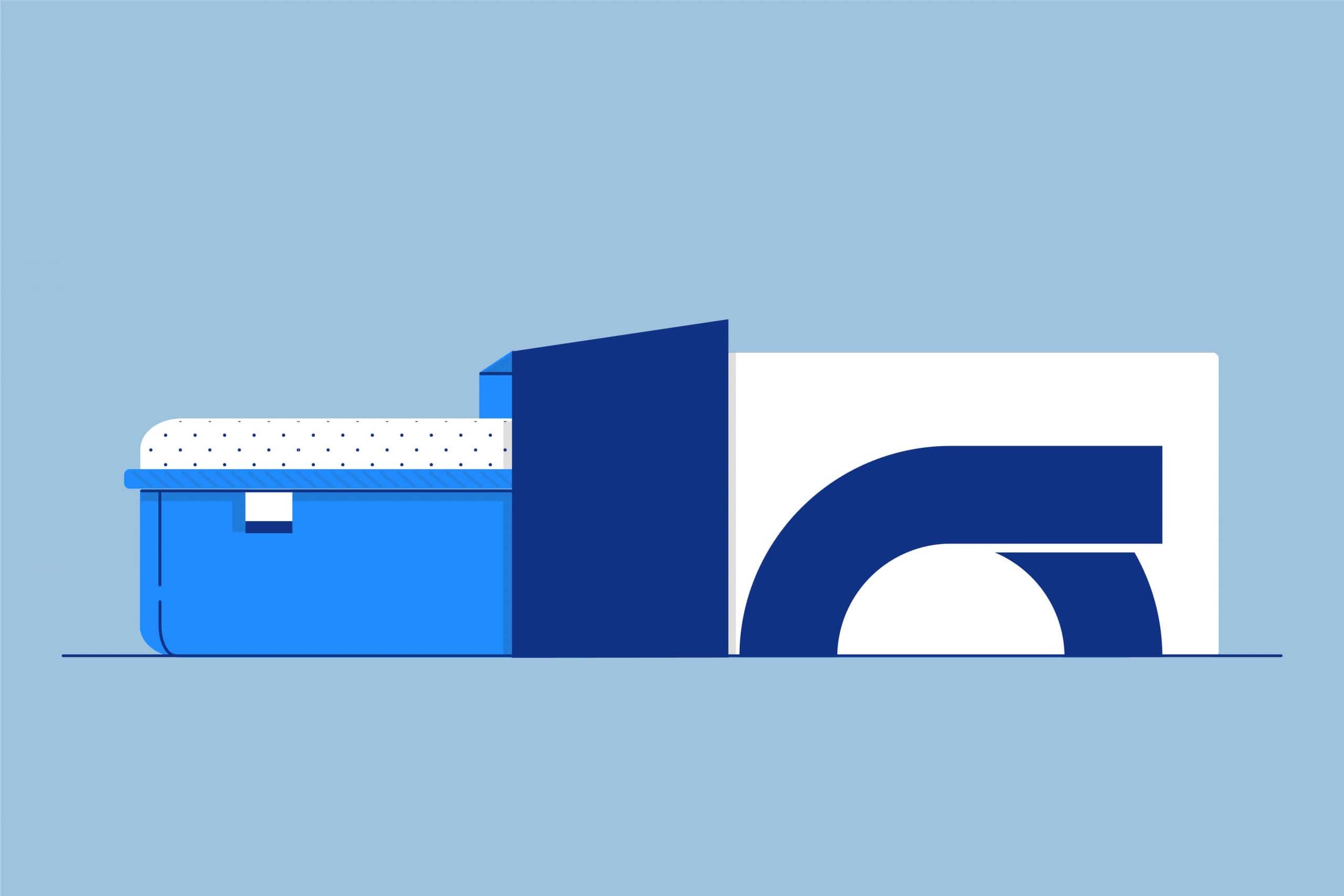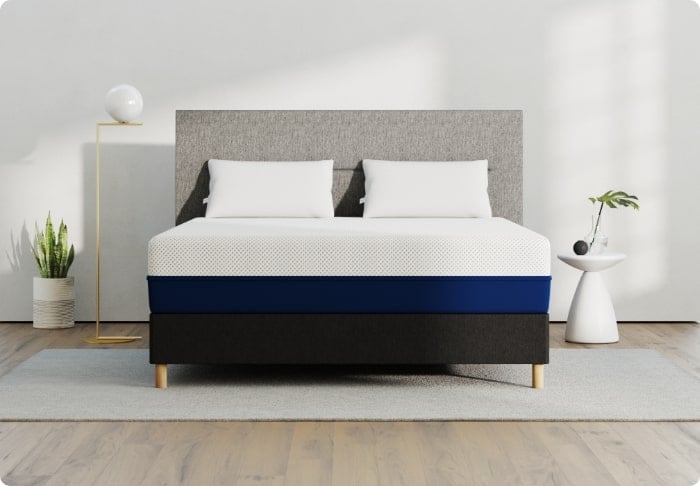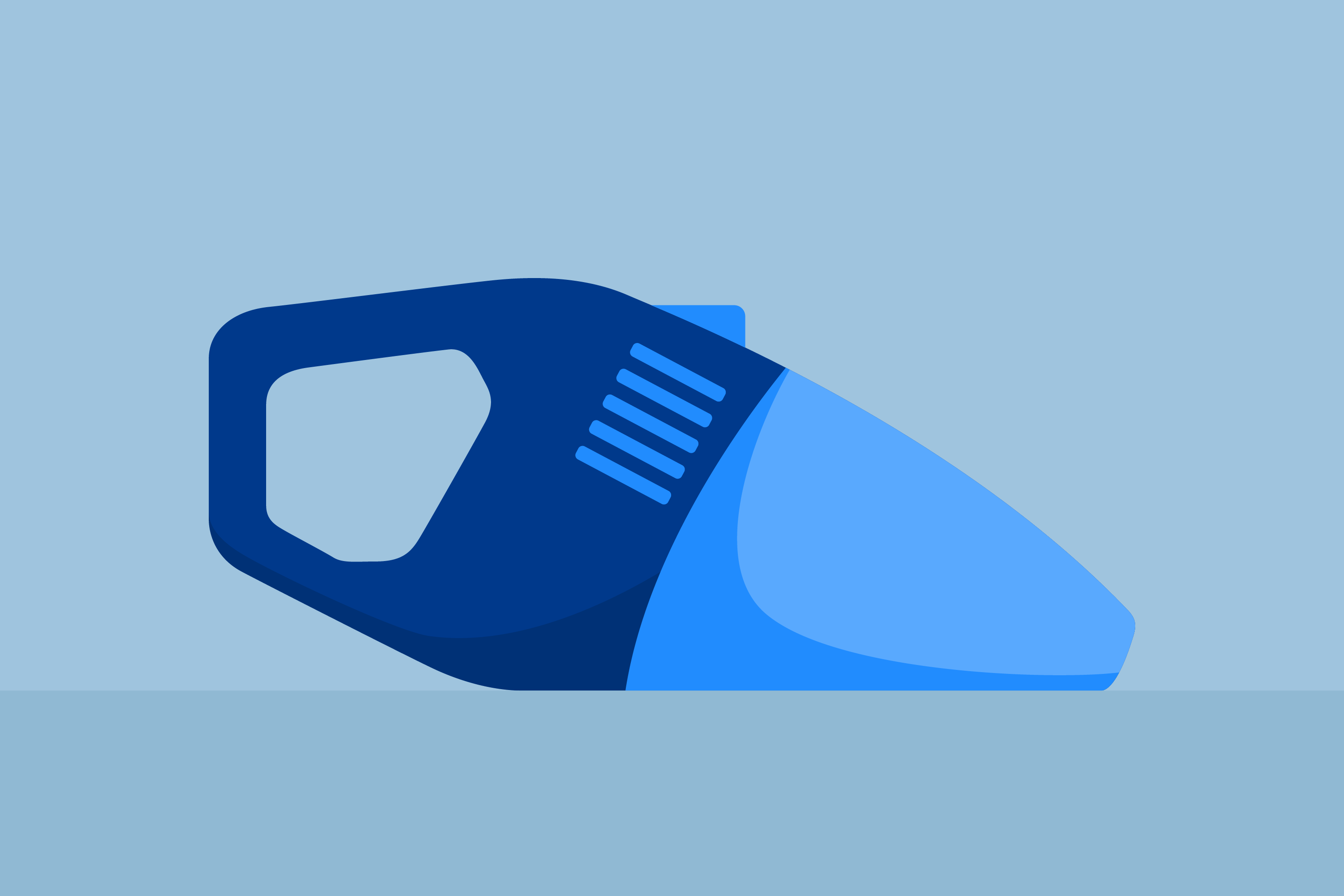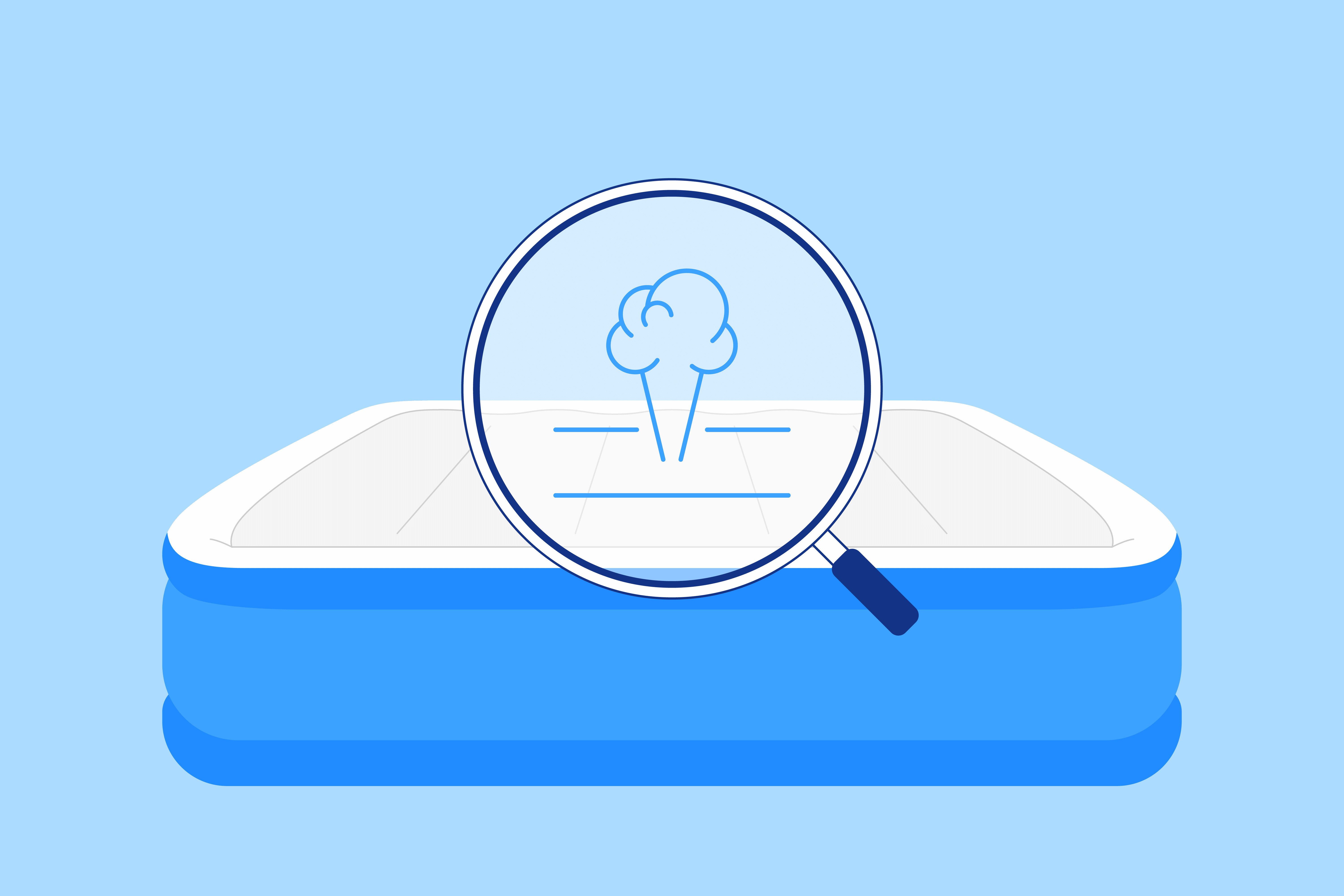Powered by Amerisleep, EarlyBird brings together a dedicated team of sleep science coaches, engineers, and product evaluators. We meticulously examine Amerisleep's family of products using our unique product methodology in Amerisleep's state-of-the-art laboratory. Our commitment to sustainability is reflected in our use of eco-friendly foam in our products. Each article we publish is accurate, supported by credible sources, and regularly updated to incorporate the latest scientific literature and expert insights. Trust our top mattress selections, for your personal sleep needs.
- Best Mattress Overall: Amerisleep AS3
- Best Mattress for Back Pain: Amerisleep AS2
- Best Soft Mattress: Amerisleep AS5
- Best Hybrid Mattress: Zoma Hybrid
- Best Budget Mattress: Vaya Mattress
- Best Mattress for Athletes: Bear Elite Hybrid
- Best Mattress for Side Sleepers: Helix Midnight Luxe
- Best Cooling Mattress: Nolah Evolution 15
- Best Natural Mattress: Avocado Green
- Best Mattress for Kids: Purple Kids Mattress
You probably found this article because someone you know just got a mattress delivered to their house in a small box and you’re wondering…is that really a thing? Yes, it is! And it’s more than just a passing trend.
What is a Mattress in a Box?
We can’t talk about beds in a box without talking about the ubiquitous foam mattress— since 2006 when the first bed in a box was invented (by a company called Bed in a Box, of course), memory foam has only risen in popularity. That’s because memory foam lends itself well to being compressed, rolled, and stuffed in a box.
Beds in a box were born out of the need for customers to try out a mattress in their own home before committing to it. Instead of trekking to the nearest mattress store (or stores) and trying out dozens of beds for a few minutes each, you can now buy a bed online, get it shipped to your house, try it in your own room with your own bedding, and even return it for a full refund within a certain time period.
Best Mattresses In A Box
Quick Guide: A 30-Second Summary
| Best Mattress Overall | Amerisleep AS3 |
| Best Mattress for Back Pain | Amerisleep AS2 |
| Best Soft Mattress | Amerisleep AS5 |
Best Mattress Overall
Amerisleep AS3

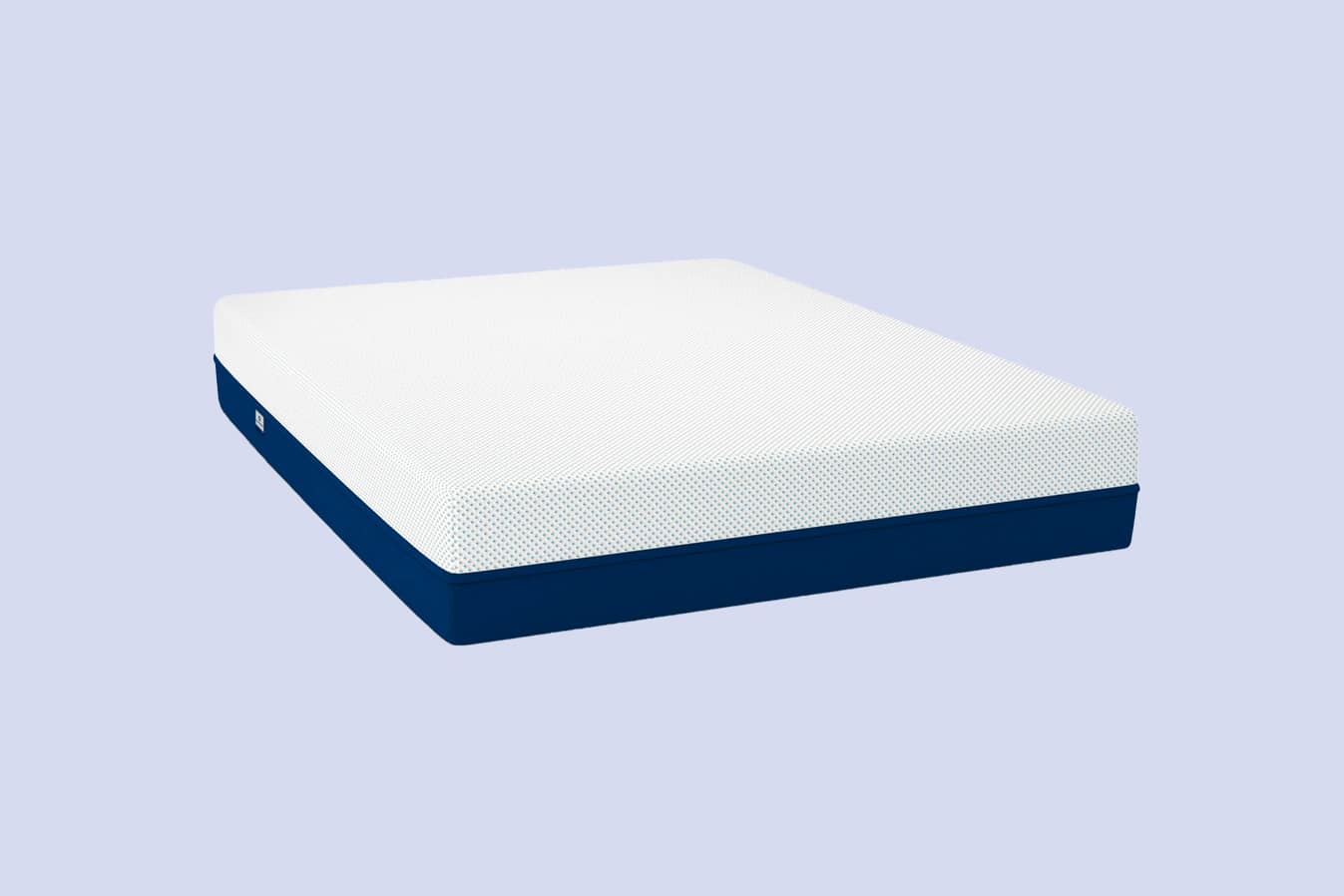
-
Price Range: $1049 to $2198
-
Mattress Type: Memory Foam
-
Firmness: 5 to 6 out of 10 (Medium)
-
Thickness: 12 Inches
-
Available In: Twin, Twin XL, Full, Queen, King, California King, Split King
- Memory foam with plant-derived oils
- Five zones of targeted support and pressure relief
- Sag-resistant base for mattress longevity
- Most sleeping styles
- Hot sleepers
- Couples
- Eco-conscious shoppers
The AS3 is the customer favorite thanks to its balanced medium-feel. It can comfortably support most sleeping styles, making it perfect for all ages and various positions. No matter your need, whether it’s filling a guest room or sharing with a partner the AS3 is built to provide what you need.
If you’re looking for a balanced blend of comfort and support with a bit more bounce, our AS3 Hybrid is an excellent choice. It’s particularly suitable for those who tend to sleep hot, as it offers improved airflow compared to the pure memory foam AS3 model.
Quick Summary:
- Balanced medium firmness ideal for most
- Cooling Bio-Pur® foam top
- Five support zones for the body
- Bio-Core® extends the life of the mattress
If a bed-in-a-box brand only makes one mattress, usually it’s a medium-feel because that firmness appeals to side sleepers and combination sleepers, and these are the two most popular sleeping positions. Even back sleepers can enjoy a medium mattress if they prefer softer feels.
Hence, a medium mattress appeals to the widest audience. Because of this, medium mattresses work well for couples, too, since they are evenly soft and supportive, two things most consumers want in a mattress.
The AS3 has three inches of Bio-Pur® layer (one more inch than the AS2), so it’s a bit softer and more contouring for side and combination sleepers. These three inches of Bio-Pur® create a comfortable, cool sleeping surface, particularly when paired with our advanced Refresh mattress cover.
The mattress also adjusts to your sleeping position while relieving pressure points, thanks to Bio Pur® and the transition layer of Affinity foam. The Affinity foam has hexagonal cutouts, arranged in a pattern known as HIVE® technology, to help the mattress flex with the body.
The two-inch thick Affinity layer is followed by seven inches of sturdy Bio-Core®. The responsive Bio-Pur® layer limits motion transfer so you won’t feel the shifting movements of your partner during the night.
- Deb highly recommends the Amerisleep AS3, citing the improved comfort, reduced back pain, and better mobility she experienced after just a few days of use. She initially had reservations about buying a mattress online, even just one she planned to use in the guest room, but found the positive reviews and return policy reassuring. She’s so pleased with the purchase that she has even moved into the guest room to enjoy the comfort and support of this mattress over her previous one.
- Doc praises the Amerisleep AS3 as the most comfortable one they’ve ever slept on. They express high satisfaction, noting that even after four years of use, the mattress remains as comfortable as it was on day one, with no loss of shape or sagging. Doc even wishes that hotels offered mattresses of the same quality when they travel.
- EC describes the Amerisleep AS3 as fantastic. They first experienced this mattress at a friend’s house and were so impressed that they immediately inquired about its source and ordered one for themselves and their guestroom.
Best Mattress for Back Pain
Amerisleep AS2
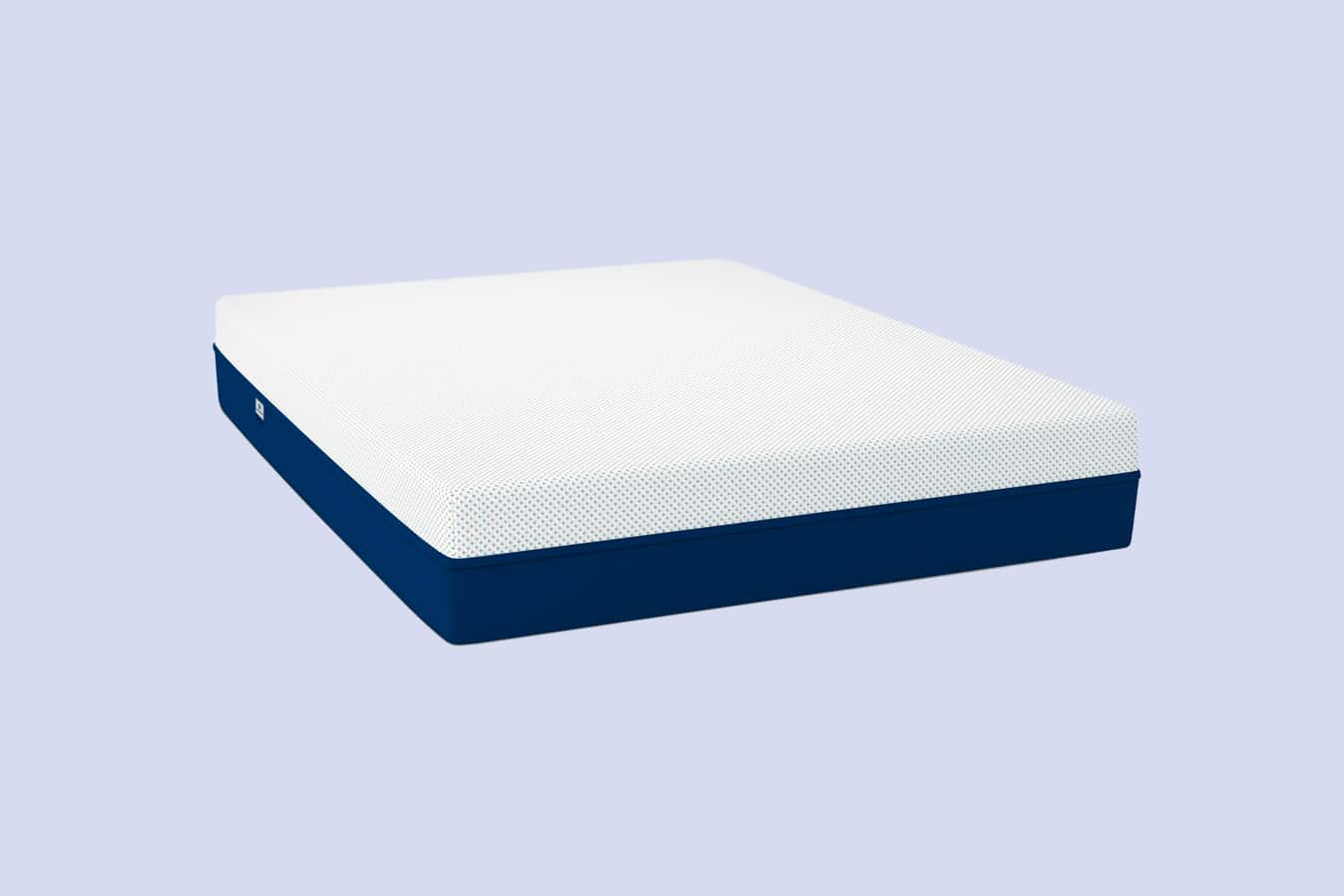
-
Price Range: $849 to $1798
-
Mattress Type: Memory Foam
-
Firmness: 7 out of 10 (Medium-Firm)
-
Thickness: 12 Inches
-
Available In: Twin, Twin XL, Full, Queen, King, California King, Split King
- Memory foam molds to the back's curves
- Targeted lumbar support from transition layer
- Base foam promotes a healthy spine alignment
- Back, combo, and stomach sleepers
- Heavyset sleepers
- Back pain sufferers
The medium-firm AS2 appeals to heavy sleepers who like a firmer surface, sleepers with back pain, or back and stomach sleepers. It’s perfect for those who want a supportive surface they can rely on, night after night.
Like all Amerisleep mattresses, the AS2 ships free and comes with a 100-night sleep trial and a 20-year warranty.
Quick Summary:
- Affinity transition layer buffers between Bio-Core® and Bio-Pur® layers for extra support
- HIVE® technology relieves pressure points and dissipates heat
- Medium-firm feel gives stomach and back sleepers slightly more cushioning than the AS1
- Limited motion transfer thanks to the advanced open-cell foam
Back pain from a mattress can be a tricky issue to solve, as the solution typically requires picking out a model neither too soft nor too firm for your sleep needs. The Amerisleep AS2 possesses a gently firm feel that can cradle and support back sleepers, along with some stomach sleepers and combo sleepers.
Business Insider even ranked the AS2 as their number one recommended mattress for back pain sufferers, and they’re not the only ones who have highlighted the bed as a fantastic solution to back pain.
Each layer of the AS2 does something different for the overall support and feel of the bed. The top 2-inch layer of breathable Bio-Pur® gives you a conforming place to rest. Made with a selection of plant-derived oils, Bio-Pur® foam is quick to adapt to a sleeper’s movements and positions.
Below the Bio-Pur® is the Affinity transition layer with Surface Modification Technology (SMT). This three inch-layer has HIVE® technology, which adapts to your changing positions during the night, supporting you where you need it most.
The seven-inch Bio-Core® layer reinforces the softer layers above it and extends the life of the mattress beyond the average 7-8 years for memory foam beds.
- Marcos says the Amerisleep AS2 is one of the best mattresses he’s used. He particularly appreciates the firmness of the mattress, which doesn’t lose its shape. Marcos concludes by stating that he would recommend this mattress to a friend.
- Bill shares his experience transitioning from an older spring mattress to the AS2. He initially found the AS2 to be softer than his previous spring mattress, which caused some hip discomfort for a few nights. However, the hip discomfort eventually went away, and the mattress helped alleviate his middle back pain. Bill also mentions that the mattress has poorer heat dissipation compared to a spring bed, which was particularly noticeable during a heatwave in 2024, possibly exacerbated by high humidity. However, he acknowledges that the heat dissipation issue may vary depending on individual circumstances. Overall, Bill describes the AS2 as a “perfectly good mattress” with some initial adjustments needed, but it eventually helped with his back pain.
Best Soft Mattress
Amerisleep AS5
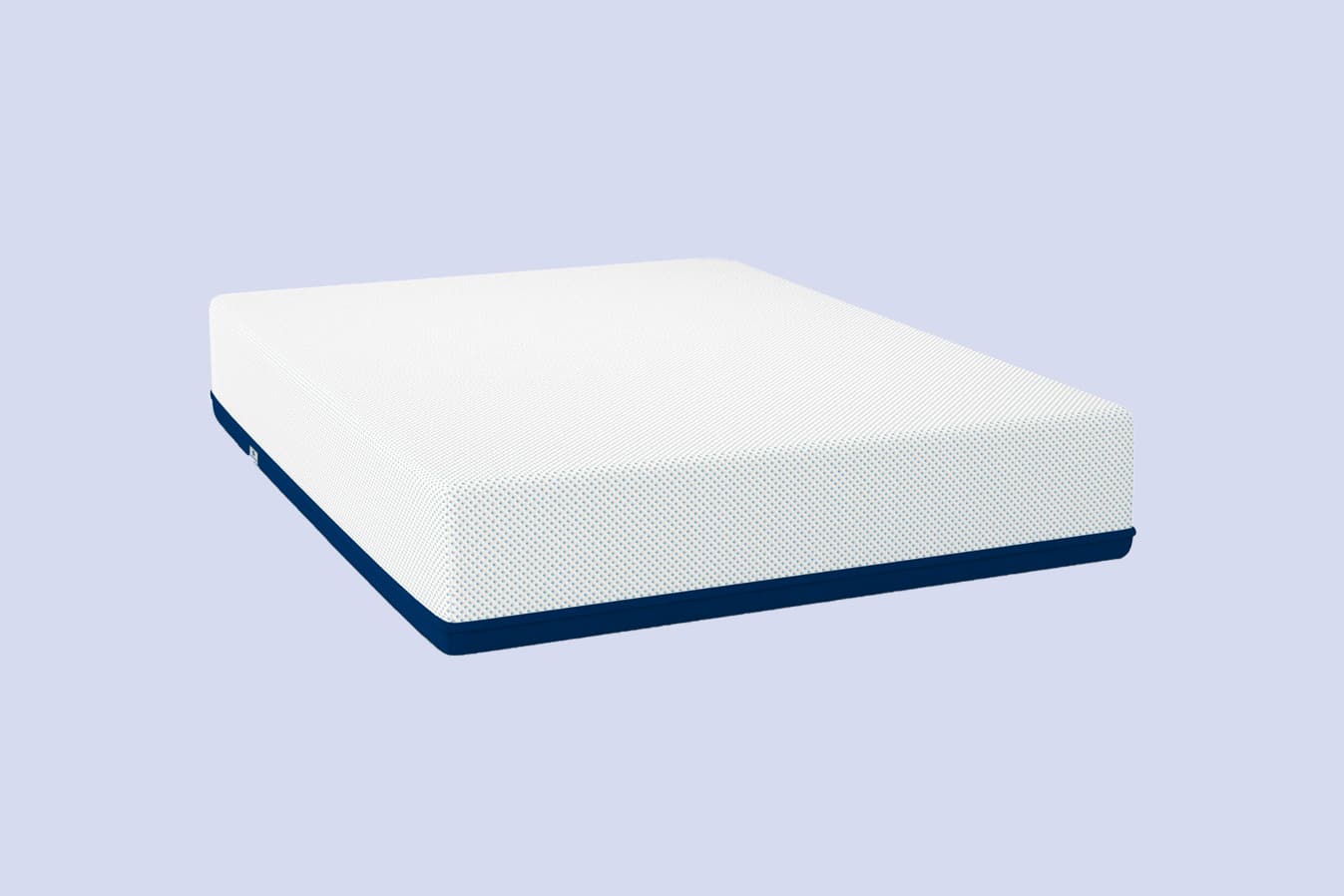
-
Price Range: $1649 to $3398
-
Mattress Type: Memory Foam
-
Firmness: 3 out of 10 (Soft)
-
Thickness: 12 Inches
-
Available In: Twin, Twin XL, Full, Queen, King, California King, Split King
- Plush memory foam eases tension
- Active Flex increases bounce without limiting softness
- Pocketed coils with edge support
- Side sleepers
- Petite sleepers
- Hot sleepers
The AS5 is Amerisleep’s softest mattress in box. Softer mattresses that conform closely and have more give like the AS5 does are ideal for side sleepers. Side sleeping concentrates weight on the shoulders and hips which can put pressure on joints.
A softer mattress allows these areas to sink in and fill the gap between the waist and shoulders/neck for better alignment, while also reducing pressure points. The AS5 is also constructed to stay cool at night, even as it fully embraces the body.
We also have a hybrid variant of our luxurious AS5 mattress. Just like the original AS5, it features Bio-Pur® and Active Flex for an enhanced sleeping experience. However, instead of a Bio-Core base, the AS5 Hybrid relies on pocketed coils.
Quick Summary:
- Amerisleep’s best bed for side sleepers
- Great for petite and heavy sleepers alike
- Active Flex prevents uncomfortable sinkage
- HIVE® technology promotes proper alignment
Soft and cool, the Amerisleep AS5 delivers cloud-like comfort without breaking the bank. Sleepers can gently sink into the surface and enjoy full-body pressure relief, yet they can still rise easily in the morning, thanks to its buoyant materials.
The AS5 has an extra layer of material in it no other mattress has, which makes it suitable for sleepers over 250 pounds. This extra material, Active Flex, is a responsive poly-foam in place to prevent you from sinking too far in the mattress. It gives the bed a bit of bounce and prevents you from feeling “stuck” in the bed, a common problem with soft mattresses.
The AS5 has a similar makeup to the AS3, containing 3 inches of Bio-Pur®, 2 inches of Affinity and HIVE® technology, and 7 inches of Bio-Core®. But again, what sets this bed apart is its inclusion of Active Flex directly underneath the layer of Bio-Pur®.
When you sleep on the AS5, the top layer of Bio-Pur® will contour to you, while the Active Flex below keeps you lifted “on top” of the mattress, rather than cradled within. This is exactly what heavier sleepers and active sleepers need in a plush mattress to prevent uncomfortable sinkage.
The mattress’s soft feel is also tempered by the HIVE® technology in the transition layer. The hexagonal cutouts making up HIVE® are strategically placed to provide varying levels of support to different parts of the body. In areas where more pressure relief is needed, such as the shoulders and hips, the hexagons are softer and allow for greater sinkage. In contrast, in areas that require more support, like the lumbar region, the hexagons are firmer, promoting proper spinal alignment.
The Bio-Core® layer is engineered to provide a stable and sturdy base for the comfort layers above. It plays a vital role in maintaining the mattress’s shape and preventing sagging over time. Plus, Bio-Core® distributes weight evenly and eases pressure points across the body, resulting in a more comfortable and restful sleep experience.
- Andrea, who has owned the Amerisleep AS5 for nearly 5 years, praises its durability and performance. Despite accommodating 2 adults and 2 dogs, the mattress has maintained its shape with no signs of sagging or loss of support.
- Jen and Steve are thrilled with their AS5 mattress, emphasizing its supportive yet soft qualities. They note that the mattress has alleviated pressure point pain in their shoulders and hips, enabling comfortable sleep in various positions. Additionally, they appreciate that the mattress didn’t emit any chemical odors upon setup, making it a pleasant choice for those sensitive to such smells.
- Jontay is highly satisfied with the AS5 mattress after sleeping on it for around two months. They describe it as very soft, comfortable, and supportive. They also find the price reasonable and express their willingness to repurchase this mattress if given the choice.
Best Hybrid Mattress
Zoma Hybrid
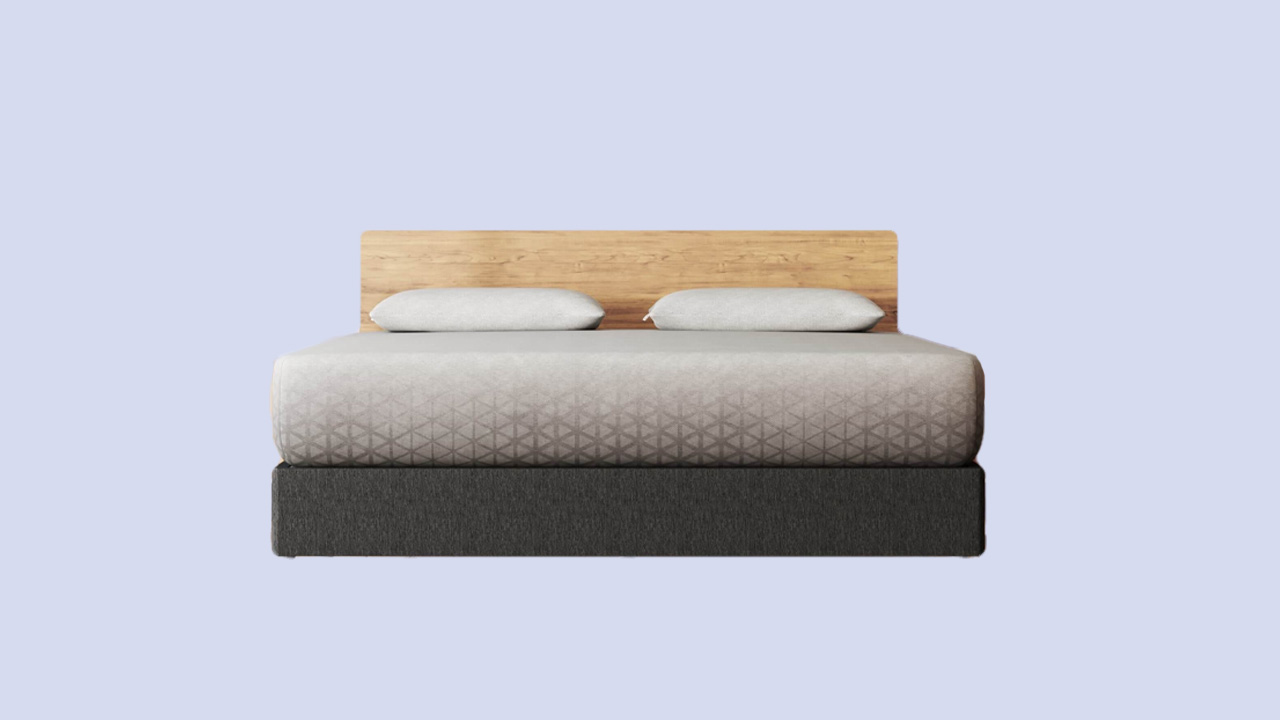
-
Price Range: $599 to $1548
-
Mattress Type: Hybrid
-
Firmness: 5 to 6 out of `10 (Medium)
-
Thickness: 12 Inches
-
Available In: Twin, Twin XL, Full, Queen, King, California King, Split King
- Gel memory foam whisks away heat
- Pocketed coils support & isolate motion
- Responsiveness boosted by transition
- Most sleepers who want a springy bed
- Hot sleepers
- Those who lead active lifestyles
The Zoma Hybrid combines the contouring relief of foam with the bounce of pocketed coils in an innovative compressed mattress. Its gel memory foam and reactive transition layer offer pressure relief while hundreds of individually wrapped coils provide breathable support.
CertiPUR-US certified foams and low VOC emissions give peace of mind. With its exceptional motion isolation, cooling comfort, and quick, convenient delivery, the Zoma Hybrid offers a premium hybrid mattress experience in a box you can set up in minutes.
The Zoma Hybrid ships free and comes with a 100-night sleep trial and a 10-year warranty.
The CertiPUR-US certified, non-toxic foams ofthe Zoma hybrid are made in the USA and appeal to eco-conscious shoppers. Its cooling gel memory foam and stretch-knit cover work together to pull heat away from the body for a cooler sleep surface. This makes the Zoma Hybrid ideal for hot sleepers.
The mattress also possesses strong motion isolation from the memory foam and pocketed coils, making it suitable for couples. Plus, the responsive Reactiv™ foam layer provides a nice “lift” to prevent you from feeling stuck in the mattress, unlike traditional memory foams.
All of this, plus the Zoma Hybrid is competitively priced compared to other hybrid models.
The Zoma Hybrid combines the contouring pressure relief of foam with the bounce and breathability of pocketed coils. It starts with a stretch-knit cover that has a ventilated weave to allow airflow and dissipate heat.
Underneath is a layer of Zoma’s gel memory foam that cradles your pressure points while pulling away unwanted body heat.
The next layer is 2 inches of Zoma’s Reactiv™ foam that provides a responsive “lift” to prevent you from ever feeling stuck in the mattress.
At the core of the Zoma Hybrid is a pocketed coil system with hundreds of individually wrapped coils that contour to your body and isolate motion between sleeping partners. The coils also promote airflow through the mattress for temperature regulation. Edge support along the sides makes it easy to move out of bed in the morning, too.
- Steve expresses great satisfaction with the Zoma Hybrid, along with the accompanying waterproof mattress protector and Zoma Pillow he purchased. Steve mentions that he loves all of these items and that the mattress cover has successfully passed a test by a child in the house. He reports improved sleep quality and relief from hip pain, which was the initial reason for getting the new mattress. Steve also notes that the mattress expanded quickly outside of the box and did not have any unusual odors upon unpacking.
- Jennifer mentions that it took a little time to adjust to the memory foam top on the Zoma Hybrid, but ultimately she finds it worthwhile. Jennifer notes that the mattress provides support despite the sinking feeling into the memory foam. She comments on the weight of the mattress and the challenges of moving it but emphasizes that it is well-packed and the box damage won’t affect it. Jennifer describes the unboxing experience as cool and mentions that her deep pocket sheets fit the mattress well.
Best Budget Mattress
Vaya Mattress
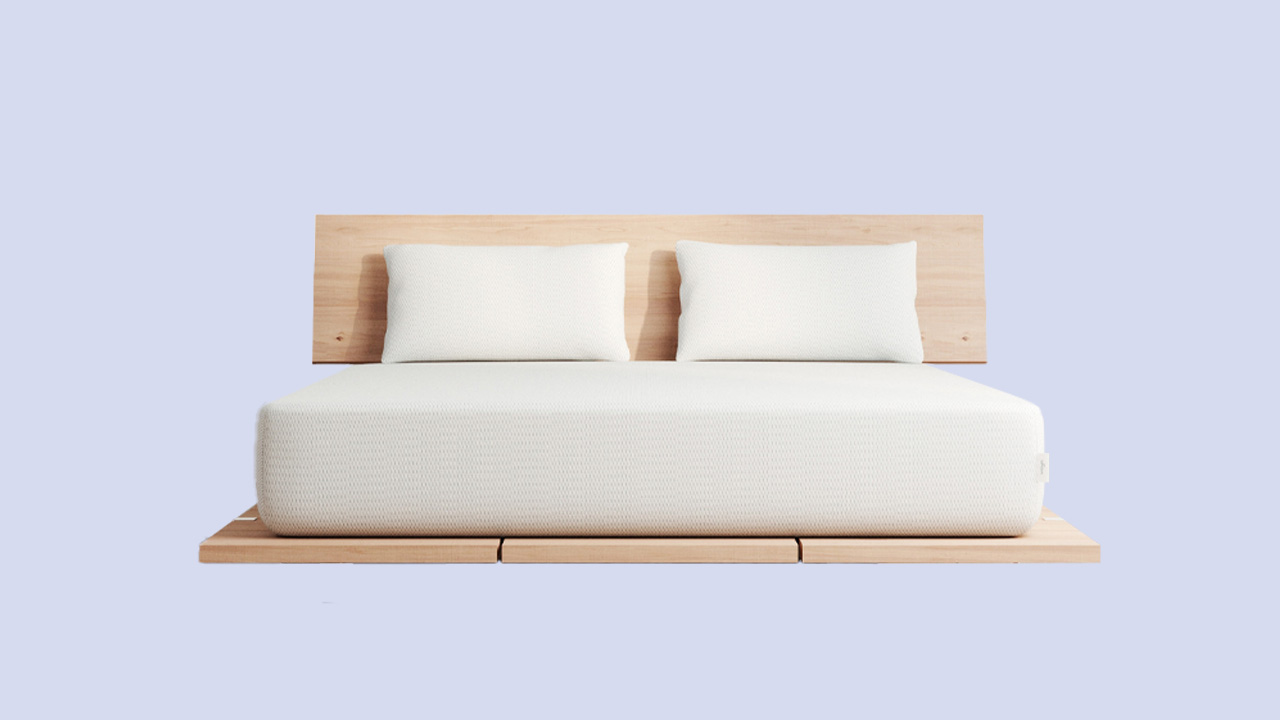
-
Price Range: $449 to $899
-
Mattress Type: Foam
-
Firmness: 5 to 6 out of 10 (Medium)
-
Thickness: 12 Inches
-
Available In: Twin, Twin XL, Full, Queen, King, California King, Split King
- Cooling cover fabric ensures airy feel
- Pressure-relieving foam top
- Sturdy foam base maintains support
- Those on a limited mattress budget
- Most sleeping positions
- Hot sleepers
Vaya has snagged the crown of comfortable affordability from other big-name brands like Tuft and Needle, Linenspa, Lucid, etc. with their focus on carefully engineered simplicity. Their crowning hidden gem is the Vaya Mattress, which is one of the most affordable budget mattresses that you will find on the market.
The Vaya Mattress ships free and comes with a 100-night sleep trial and a 10-year warranty.
The Vaya Mattress delivers premium pressure relief and support at an affordable price point. As a direct-to-consumer online mattress company, Vaya is able to pass significant savings on to customers. But the Vaya Mattress does not compromise on quality or comfort.
This all-foam mattress uses two layers of proprietary foams to provide cushioning and body contouring along with underlying support. The mattress is wrapped in a soft and durable cover that allows cooling airflow to pass through. With its high-quality foam construction, balanced comfort, and convenient home shipping, the Vaya Mattress offers an exceptional sleep experience at an affordable price.
At 12 inches thick, the Vaya Mattress is able to be efficiently shipped compressed in a box to your door. It regains its full shape within minutes after unboxing.
The top comfort layer is 3 inches of Vaya’s Comfort Foam. This proprietary foam has an open cell structure that gently cradles your body to relieve pressure points while remaining responsive so you never feel stuck. It also helps dissipate heat to keep you cool during sleep.
Underneath is a 9-inch layer of sturdy Support Foam that gives the Vaya Mattress its structure and shape retention. This high-density base foam provides stability for years of consistent comfort and support.
Together these layers give the Vaya Mattress a medium firmness that accommodates all sleeping positions. The foams used in the Vaya Mattress are CertiPUR-US® certified, meaning they are made without harmful chemicals and VOC emissions.
- Maxine reviewed the Vaya Mattress after sleeping on it for about a year. She finds it to be incredibly comfortable, especially for someone with scoliosis and a partner with back issues. Despite its affordability as a mattress-in-a-box, she considers it the best non-luxury mattress she’s ever slept on. Her only concern is with the shipping process, as that took longer than she expected. Nonetheless, she still values the mattress for its quality, price, and overall positive experience. She plans to buy from Vaya again in the future and rates it 4 out of 5 stars.
- Leonard R. is a lightweight individual who had previously slept on uncomfortable memory foam mattresses that made him feel like he was sleeping on the floor. However, he finds the Vaya Mattress to be perfect for him. It provides just the right amount of sinkage to feel comfortable and supported without making him feel trapped in the mattress.
Best Mattress for Athletes
Bear Elite Hybrid
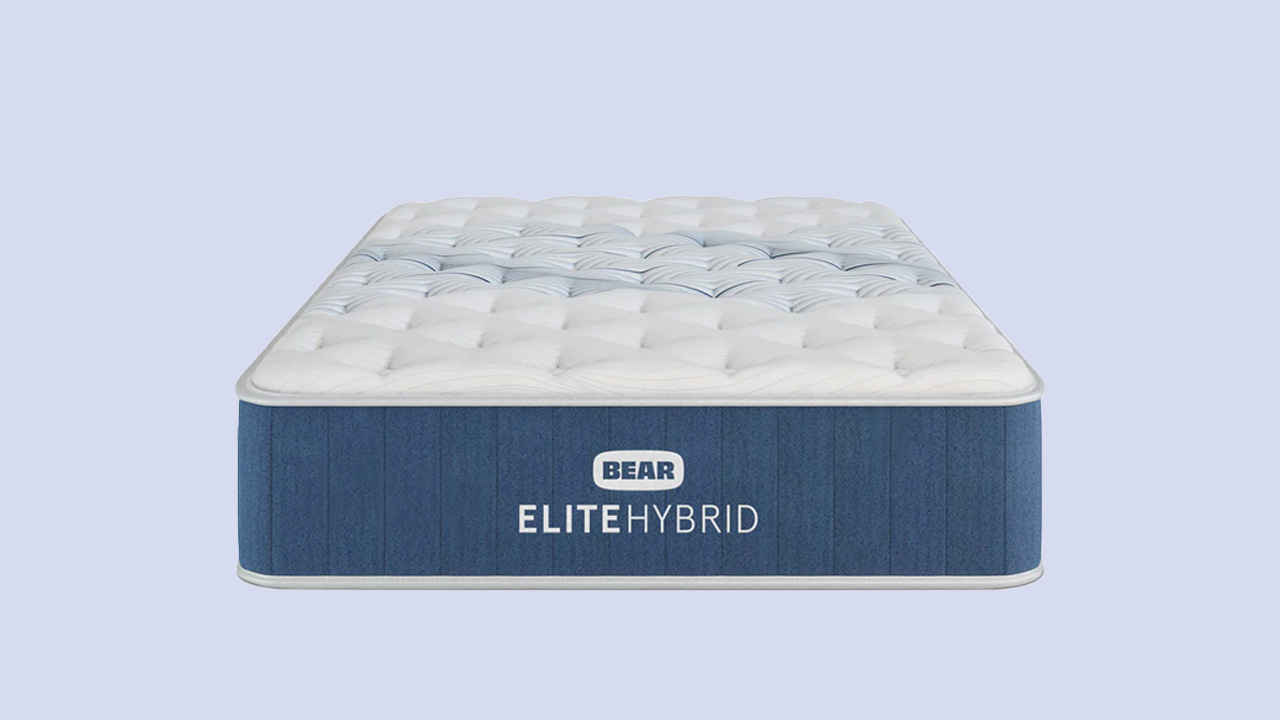
-
Price Range: $1893 to $3920
-
Mattress Type: Hybrid
-
Firmness: 5, 6, or 7 out of 10 (Soft, Medium, Firm)
-
Thickness: 14 Inches
-
Available In: Twin, Twin XL, Full, Queen King, California King, Split King
- Celliant™ and PCM for ultra-coolness
- Zoned coil support for body recovery
- Natural copper infusion for comfort
- Athletes and active individuals
- Hot sleepers
- Different sleeping positions
Bear designs their mattresses to provide comfort to the athletic market, and their peak model is the appropriately named Elite Hybrid. The Bear Elite Hybrid combines cooling comfort and targeted support in an innovative bed in a box, designed to help athletes rest better at night and reach their peak performance during the day.
As a compressed mattress, the Bear Elite can be conveniently delivered to your home and set up in just minutes. The Hybrid also comes with a 120-night sleep trial and a lifetime warranty.
The Bear Elite Hybrid brings together advanced cooling, pressure relief, and zoned support in a convenient compressed mattress. When opened, the Elite Hybrid expands to its full 14-inch thickness within minutes, providing quick and restorative comfort for athletes and other active individuals.
While the Bear Elite Hybrid relies on multiple cooling and conforming materials for its comfort, the star of the show is the Elite Hybrid’s pocketed coil system containing over 1,000 individually encased coils. Strategically placed coils lift and reinforce the lumbar area while softer coils cradle your shoulders and hips.
The Elite Hybrid starts with a Celliant fiber cover that absorbs body heat and transforms it into infrared energy to aid muscle recovery and rest. This makes it ideal for athletes and those with an active lifestyle. The quilted cover also feels cool to the touch for temperature regulation.
Underneath is a layer of copper-infused memory foam. The copper pulls heat away from the body for a cooler sleep environment while providing contouring cushioning. The copper also has antimicrobial properties to inhibit bacteria and odors.
A transitional layer of responsive foam prevents you from sinking deeply into the mattress and makes changing positions easy.
At the core of the Elite Hybrid is a zoned pocketed coil system with up to 1,374 individually encased coils. The coils provide responsive support with reinforced edges.
Firmer coils in the lumbar zone gently support the spine’s alignment, while softer transitional coils allow your shoulders and hips to sink into the mattress. This dynamic support system relieves pressure points for side, back, and stomach sleepers.
The reinforced perimeter adds edge support to maintain stability when getting in and out of bed. A high-density foam base reinforces the coils to improve the mattress’s durability and structure.
- Lindsay W. describes the Bear Elite Hybrid as worth every penny and notes that it has provided her with the best sleep she’s had in years. She even mentions that her two-year-old child enjoys cuddling on the mattress.
- Samantha R. and her husband were previously sleeping on a 20-year-old mattress that was uncomfortable. After extensive research and testing various mattresses, they found the medium-feel Bear Elite Hybrid to be the perfect choice. Upon laying down on it, her husband expressed immediate comfort, and they were both pleased with how quickly it expanded after unboxing, without any odor. Samantha described the mattress as hugging them in, feeling like sleeping on a comfortable pillow, and reducing tossing and turning. The only drawback she mentioned was how difficult the mattress’s comfort made getting out of bed in the morning.
Best Mattress for Side Sleepers
Helix Midnight Luxe
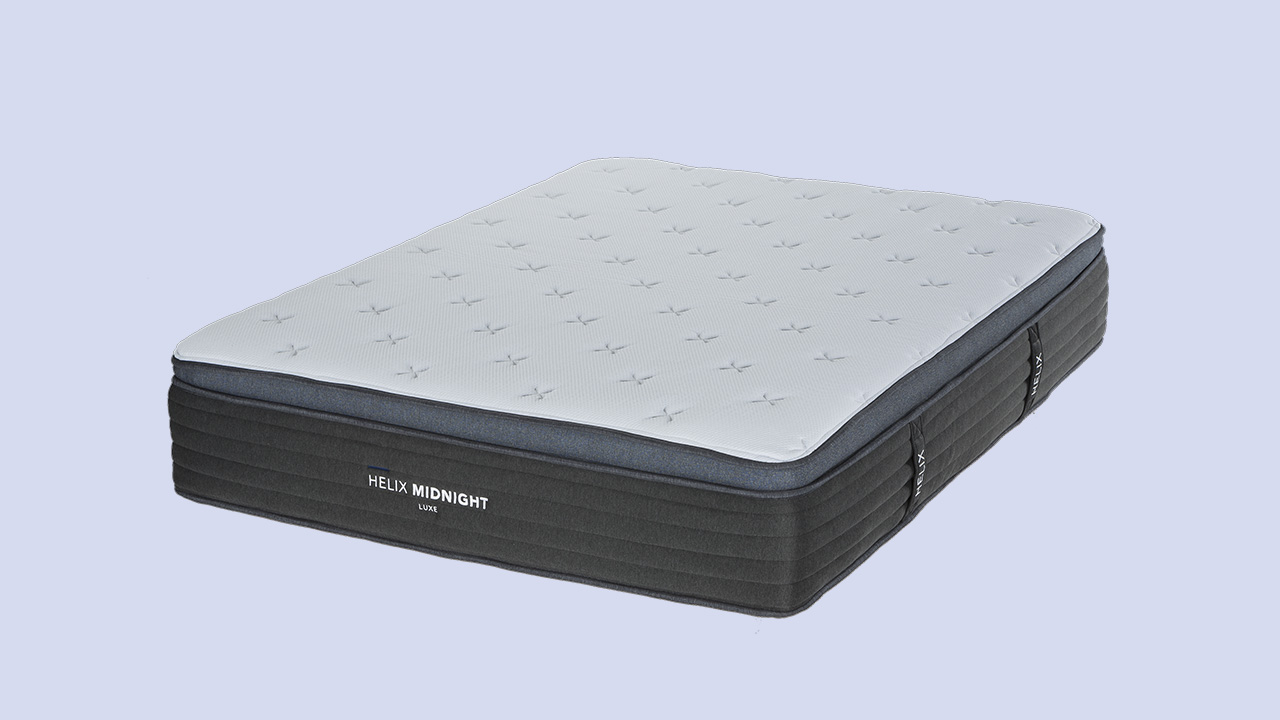
-
Price Range: $1,373.80 to $2,873.80
-
Mattress Type: Hybrid
-
Thickness: 14 Inches
-
Firmness: 4 to 7 out of 10 (Medium)
-
Available In: Twin, Twin XL, Full, Queen, King, California King
- Pillowtop cradles side sleeper's curves
- Cooling cover deters overheating
- Zoned support for shoulders & hips
- Side sleepers & some combo sleepers
- Hot sleepers
- Couples
Side sleepers have specialized needs when it comes to mattresses in a box, as they need a mix of pressure relief and support for the heavier areas of their body. Often, it’s best to find mattresses tailored specifically for side sleeping, as the Helix Midnight Luxe is.
The Helix Midnight Luxe mattress provides a premium sleeping experience with its innovative construction that combines advanced cooling technology, targeted support, and pressure-relieving comfort. Side sleepers can gently sink into the surface for sleep and emerge from bed in the morning, refreshed and ready to tackle the day.
The Helix Midnight Luxe ships free and has a 120-night sleep trial and a 15-year warranty.
Side sleepers need a mattress that cushions the shoulders and hips to properly align the spine and reduce pressure points that can cause discomfort. The Midnight Luxe has several features that provide exceptional support and comfort for side sleeping.
With its premium quilted cover, advanced cooling technology, pressure-relieving memory foam, responsive transition layer, and dynamic coil support system, the Helix Midnight Luxe mattress is expertly engineered for cool, comfortable sleep.
The top layer is a quilted pillow top cover made from ultra-breathable Tencel™ fabric or the high-tech GlacioTex™ cooling cover. Tencel™ is a soft, breathable fabric that feels cool against your skin and promotes airflow to keep you comfortable throughout the night. The GlacioTex™ cover incorporates phase change material that actually absorbs and stores heat from your body, leading to a cooler and drier sleeping surface.
Underneath the cover is a comfort layer of Helix responsive foam that contours to your body shape and cradles pressure points for all-over comfort and support. This is followed by a layer of copper-infused gel memory foam that provides body-conforming and a medium feel. The copper-infused foam has cooling properties to help regulate temperature, while the memory foam reacts to your body weight and shape to alleviate discomfort at the shoulders, hips, and other areas.
Next is a transition layer made of Memory Plus foam that supports your body weight and reinforces the mattress structure. This leads into the dynamic zoned body shape layer with up to 1,000 individually wrapped coils.
This coil system provides reinforced support under the hips to align the spine and advanced edge support. The individually responding coils adapt to your movements and various positions to relieve pressure where you need it most.
The base layer is made of durable, dense foam that gives the mattress structure and ensures it retains its shape. Combined with the reinforced edges, this dense foam base prevents sagging and sinking so you can enjoy consistent comfort and support across the mattress surface.
- Steven J. describes the Midnight Luxe as a transformative addition to their sleep experience. They highlight the impressive design and the soft, quilted cover that adds elegance to their bedroom. Steven emphasizes the mattress’s durability, mentioning its high-quality materials and expressing confidence in its ability to provide years of restful sleep.
- Ronald R. provides a glowing review of the Helix Midnight Luxe, emphasizing that it lives up to the hype. They mention the mattress’s initial weight but note that it was easy to unpack with provided instructions. Once fully reinflated, Ronald expresses immense satisfaction with the mattress. As a side sleeper, they describe that the mattress has relieved hip and back aches, with the positive effects noticeable from the very first night. Ronald characterizes the mattress as providing a perfect balance of softness and firmness, delivering the desired support for both back and side sleepers.
Best Cooling Mattress
Nolah Evolution 15
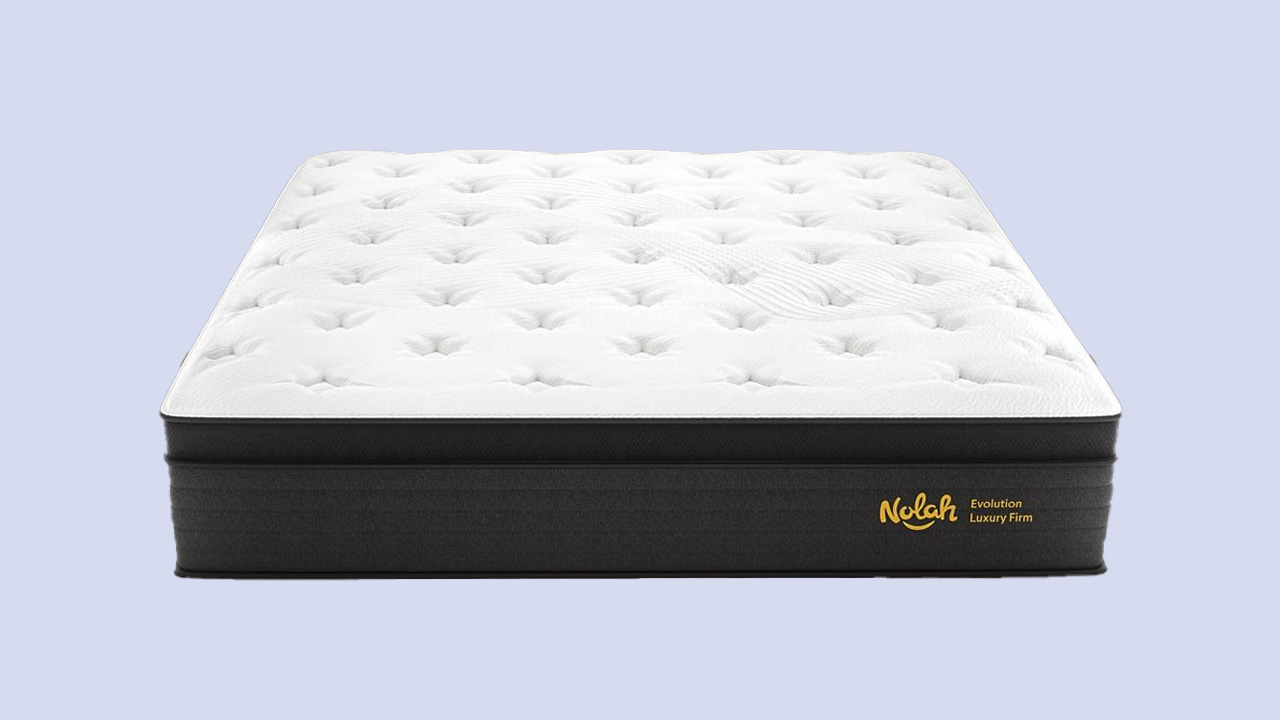
-
Price Range: $1499 to $3198
-
Mattress Type: Hybrid
-
Firmness: 5, 6 to 7, or 8 out of 10 (Plush, Luxury-Firm, Firm)
-
Thickness: 15 Inches
-
Available In: Twin, Twin XL, Full, Queen, King, California King, Split King
- Concentrated top of cooling materials
- Responsive materials promote bounce
- Coils with three targeted support zones
- Hot sleepers
- Different sleeping styles
- Luxury mattress lovers
Coolness is paramount in any mattress in a box worth considering, as many sleepers need special features to stay cool at night on warm summer nights. There are many cooling mattresses available on the market, but our favorite among our competitors is the Nolah Evolution 15.
The Nolah Evolution 15 is a luxury hybrid mattress that combines advanced cooling technologies and targeted back support for a cool, comfortable night’s sleep. Every one is assembled in the USA with high-tech, specialty materials that are designed to provide cooling comfort and enduring support.
The Nolah Evolution 15 comes with a 120-night sleep trial and a lifetime warranty.
With its luxurious pillow top, cooling AirFoamICE layer withunderlying CoreComfort and EverAdapt layers, and reinforced dynamic coil system, the Nolah Evolution 15 hybrid brings together best-in-class technologies to provide exceptional comfort and temperature regulation.
Tested to sleep cooler than other leading foam beds, the graphite-infused AirFoamICE excels at thermal regulation. When combined with the breathable, moisture-wicking cover, the Nolah Evolution is distinctly designed to provide superior cooling comfort all night long.
It starts with a beautifully quilted Euro-style topper containing cotton fibers that dissipate heat away from the body for a cool, dry sleep surface.
Under the quilted topper is 2” of Nolah’s proprietary AirFoamICE foam that leverages graphite-infused foam to provide superior pressure relief while pulling heat away from the body up to 6x faster than traditional memory foam. This hyper-cooling foam prevents heat buildup for cooler comfort.
Next is 2 inches of CoreComfort Support Foam, an ultra-durable foam that deepens the bed’s pressure relief. Then, a 1-inch layer of EverAdapt Transition foam.
At the core of the Evolution is a pocketed coil system containing up to 1,190 individually wrapped coils for contouring support. The coil unit features reinforced edges to provide stability when getting in and out of bed. It also contains zoned areas to target the shoulders, hips, and lumbar region. Softer transitional coils allow shoulders to sink in while firmer coils lift the lumbar for proper spinal alignment and back pain relief.
All of these rest on a foundation of recycled plant fibers.
- Kenneth Scholtz reported that the Nolah Evolution 15 had replaced a previous “luxury” Stearns & Foster mattress, resulting in improved sleep quality with no more frequent waking up in pain. While he had a positive shopping and sleeping experience, there were some issues with the delivery being slightly delayed, which caused inconvenience in verifying the estimated time of arrival.
- Jennifer Wunderlich highlights her and her husband’s history of back surgery and chronic pain. Then she expresses their satisfaction with the bed’s comfort and overall quality.
Best Natural Mattress
Avocado Green Mattress
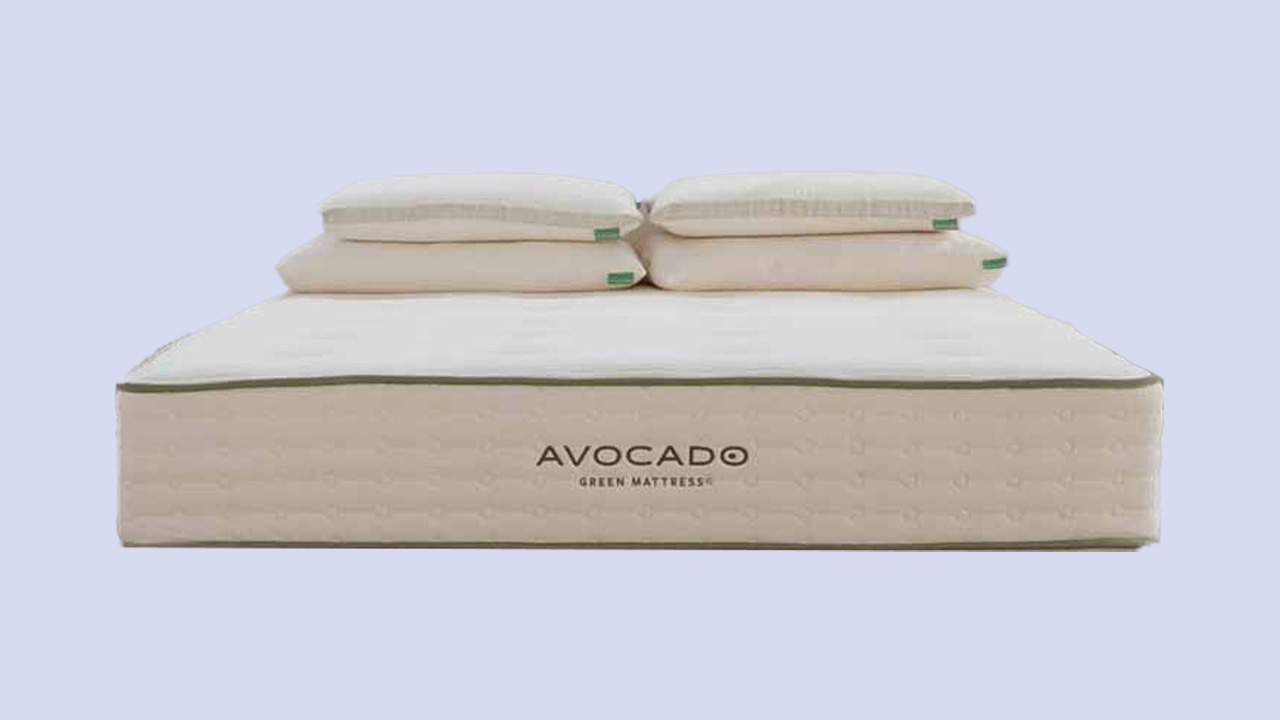
-
Price Range: $1399 to $3999
-
Mattress Type: Latex Hybrid
-
Firmness: 4, 6 or 7 out of 10 (Plush, Medium, or Firm)
-
Thickness: 11, 13 Inches, or 15.5
-
Available In: Twin, Twin XL, Full, Queen, King, California King
- Plusher options have pillowy latex
- Zoned support from upcycled coils
- Organic cotton and organic wool
- Hot sleepers
- Sleepers sensitive to synthetics
- Eco conscious shoppers
Natural mattresses are chosen for their eco-friendly appeal, and the Avocado Green is one of the best mattresses for anyone who wants an organic bed that’s thoughtfully constructed from top to bottom. Handcrafted with natural and organic materials, the Avocado Green mattress sets a new bar for eco-friendly mattresses.
The Avocado Green Mattress also comes with the security of a 1-year sleep trial and a 25-year warranty.
Rather than harsh adhesives, the layers are safely secured inside the mattress using an artisanal needle-tufting technique, lending to the bed’s durability and longevity. From its 100% organic cotton cover to its eco-friendly materials, the Avocado Green mattress offers a genuinely healthy, non-toxic night’s sleep for all sleeping positions. Hand-tufted in California with domestic and imported materials, the thoughtful craftsmanship creates a supportive, breathable sleep surface.
With certifications like GOLS, GOTS, and OEKO-TEX Standard 100, every component in the Avocado mattress is rigorously tested for safety and environmental stewardship.
At the surface is an indulgently plush quilted cover made from Global Organic Textile Standard (GOTS) certified organic cotton. Underneath lies the mattress’s crowning feature – up to 1,459 resilient innerspring coils arranged in 5 strategic zones. This unrivaled coil system provides personalized back, hip, and shoulder support by using precision zoning – firmer coils in the lumbar region and softer coils at the shoulders and legs.
The durable coil unit is made from recycled steel and contains between 16 and 14 gauge coils. The recycled steel coils are tempered 3 times for unmatched resilience. Heavier 14 gauge coils in the center provide robust lumbar support while 16 gauge perimeter coils reinforce the edges for full sleep surface usage. The zoned coils contour to the body’s natural shape, provide consistent edge to edge support, and minimize motion transfer between partners. Integrated handles make rotating or moving the mattress simple.
Instead of toxic flame retardants, Avocado uses a natural wool fire barrier sustainably sourced from family farms in the Himalayas. The wool is certified by the Responsible Wool Standard for ethical animal welfare practices. The natural lanolin in organic wool regulates temperature, resists dust mites, and provides innate fire resistance – making it a safe, effective fire barrier.
Inside the Avocado Green is latex foam made from pure GOLS and FSC certified rubber tree sap, not petrochemicals. It offers cushioning pressure relief without sagging. The standard model contains gentle firm Dunlop latex. The optional Euro pillow-top adds a plush layer of softer Dunlop latex. For ultimate luxury, the box-top version features cloud-like Talalay latex.
Rather than harsh adhesives, the layers are safely secured inside the mattress using an artisanal needle-tufting technique, lending to the bed’s durability and longevity.
- Grazyna L. expresses profound satisfaction with the Avocado Green Mattress, praising its comfort and natural materials. The smooth delivery and excellent customer service, along with the well-packed product, contributed to a great purchase, leading to a significant improvement in sleep quality.
- Jonathan P. highly praises the Avocado Green Mattress as the best ever, emphasizing his satisfaction with the customer support. He suggests opting for the in-house delivery with setup for a simplified experience.
Best Mattress for Kids
Purple Kids Mattress
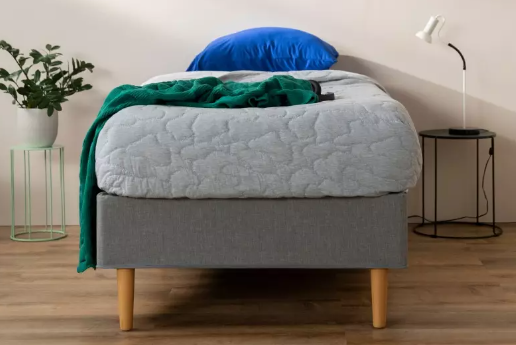
-
Price Range: $699
-
Mattress Type: Foam
-
Firmness: 5 to 6 out of 10 (Medium)
-
Thickness: 7 Inches
-
Available In: Twin
- Flexible, softer Purple GelFlex Grid top
- Clean Air GOLD & CertiPUR-US certified
- Machine washable cover fabric
- Toddlers transitioning from the crib
- Children prone to sleeping hot
- Younger teens up to age 14
The original Purple Mattress revolutionized mattresses with its innovative GelFlex grid that provides both softness and support. Now Purple has taken that same technology and created the perfect mattress just for kids – the Purple Kids Mattress.
If you want your children to sleep as blissfully as adults on the Purple Mattress, the Purple Kids Mattress takes the guesswork out of finding the perfect supportive and comfortable mattress for your little ones. Let them experience cool, cushioned comfort and wake up refreshed and ready to play.
The whole mattress is made in the USA from CertiPUR-US certified foams and comes wrapped in a soft, stretchy cover that’s machine washable for easy care. This allows parents to rest assured that they’ve chosen a safe and easy-to-clean mattress for their children.
While appropriately sized for bunk beds and loft beds, the Purple Kids Mattress still delivers that famous Purple feel. Kids will love the pressure relief, zero motion transfer, and the fun floating sensation Purple calls “No Pressure Support.”
This twin-sized mattress is specifically designed for younger sleepers, with a softer 2-inch layer of the GelFlex grid that gently cradles their body while still responding to every movement. The open grid structure also allows air to freely flow through, keeping kids sleeping cool and comfortable all night long.
Underneath the responsive GelFlex layer are dual transitional and support foams that provide the perfect balance of plushness and support for lighter weights under 115lbs. In other words, it can comfortably support the average child into their early teens.
The foams are all CertiPUR-US certified for purity and safety. The whole mattress is thoughtfully constructed in the USA for durability and quality. It comes wrapped in a soft, stretchy cover that’s easily removable and machine washable for simple care.
- Ashley S. purchased two kids’ purple mattresses and found them to be worth the price. Initially uncertain if the quality would match that of the King-sized mattress they owned, Ashley was pleasantly surprised and found they were well worth the investment.
“The kids love them and they are perfect! I would definitely recommend to anyone! If you’re reading this review wondering, which way to go— do it! You won’t regret it!” - Beth M. purchased a Purple Kids Mattress for her grandson and she expresses satisfaction with the product. As a side sleeper, her grandson finds the mattress comfortable and enjoys a restful sleep.
- Julia L. purchased two kids’ mattresses and found them to be very comfortable. Her children sleep deeply and soundly on these mattresses.
Benefits of Amerisleep Mattresses in a Box
Amerisleep might seem like just another bed-in-a-box online mattress retailer, but our unique foams and eco-friendly manufacturing sets us apart from the others. Most bed-in-a-box brands only make one or two models in the medium to medium-firm range.
We offer five different firmness options with varying foam layers. Each mattress is built to offer a customizable experience for every type of sleeper.
Bio-Pur® Foam
Bio-Pur® is unlike other comfort foams in the bed-in-a-box market because it’s partially plant-based, indicating fewer off-gassing odors. All memory foam is made using petroleum, a nonrenewable resource that can create an off-gassing odor when the mattress is unboxed. To offset these concerns, Amerisleep replaces a fraction of the petroleum in their foam with castor oil, a more sustainable and eco-friendly oil.
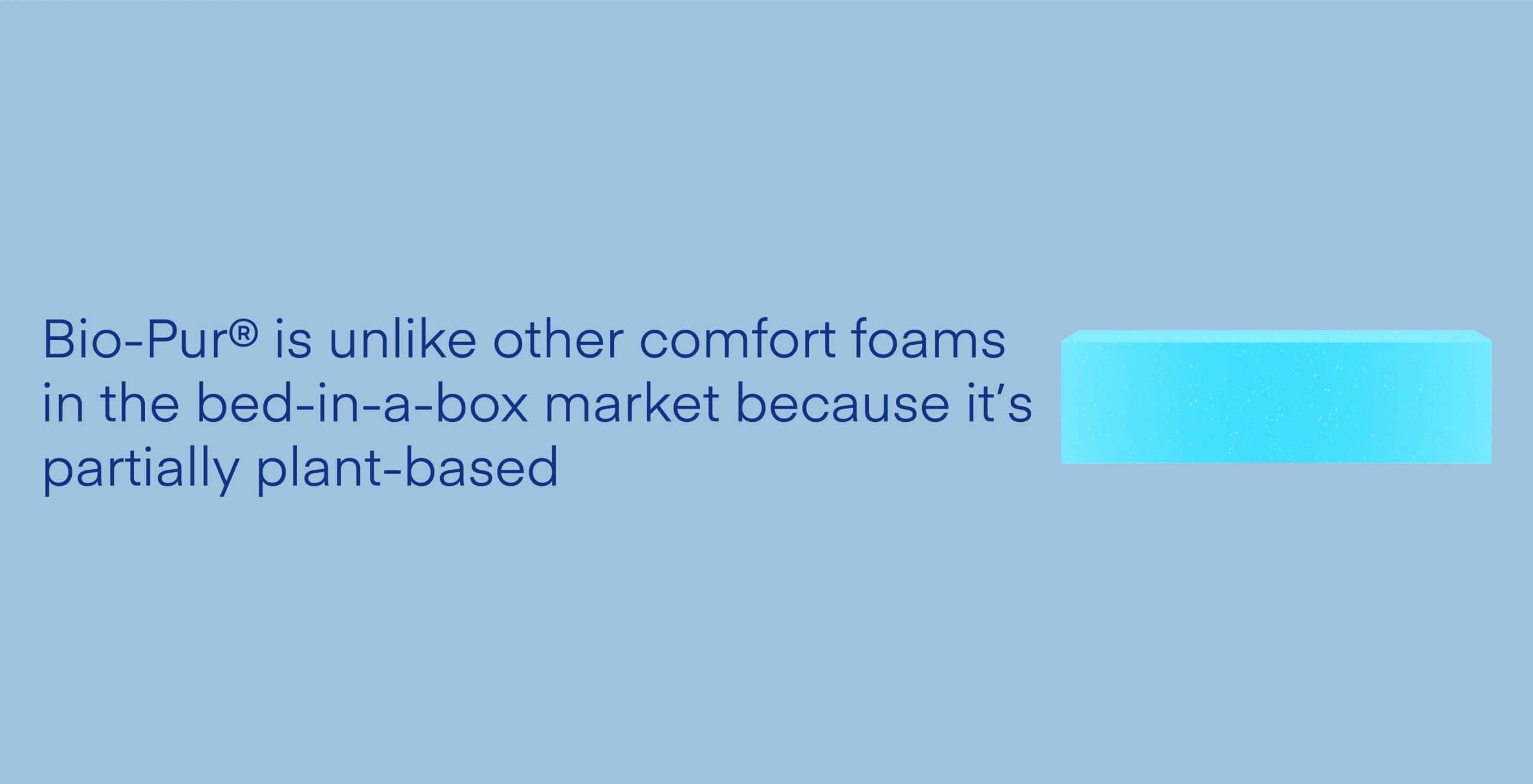
Bio-Pur® has an advanced open-cell construction, too, meaning there are more air channels between the foam particles. This translates to a cooler, more responsive mattress. In fact, Bio-Pur® is five times more breathable and retains its shape ten times faster than memory foam.
Affinity Layer with HIVE® Technology
The Affinity Layer with HIVE® is Amerisleep’s transition layer, meant to buffer between the softer comfort layers above it and the stiffer base layer below it. HIVE® stands for Harnessing Intelligent Ventilation and Energy, which describes exactly what this layer does. The Affinity layer is covered with hexagonal-shaped cutouts grouped closer together where you need more support (in the head, back, and feet) and farther apart where you need more pressure-relief (at the shoulders and hips).
The Surface Modification Technology of this layer adjusts to your sleeping position during the night, so you never feel stuck, trapped, or stiff. In other words, the mattress should feel the same no matter your position. As you can imagine, this layer improves motion isolation as well, so you don’t need to worry about bouncing around or falling off the mattress.
Bio-Core® Foam
The Bio-Core® layer is in every Amerisleep mattress. Like the Bio-Pur®, it’s manufactured using eco-friendly VPF. Even though this layer is made of foam, it’s highly supportive— in fact, it’s the reason Amerisleep can provide a longer warranty than most brands (20 years). It extends the life of your mattress and keeps the softer layers above it from sagging or sinking.
No-Risk, 100-Night Sleep Trial
Like most bed-in-a-box brands, Amerisleep offers a sleep trial so customers can try out their bed for a number of nights before deciding to keep it. They recommend you try out the mattress for at least 30 nights before initiating a return, and you can return it any time after that within 100 nights.
If you decide not to keep the bed after 30 nights, Amerisleep will help you donate your mattress and issue a full refund (with a donation receipt)— no re-packing your mattress and shipping it back.
Backed by a 20-year Warranty
The mattress industry’s standard warranty length is 10 years, and since most mattresses last for about 7-10 years anyway, this accounts for any defects or issues that may come up while the customer owns the mattress. Amerisleep offers 10 years longer than the industry standard because we are that confident in our beds’ durability.
Most mattress warranties cover the same manufacturing defects, although the specifics differ from brand to brand. Most companies cover sagging of 1 inch or more, like Amerisleep does.
The warranty also covers broken cover zippers, undone seams, and other defects not caused by normal use.
Amerisleep’s mattress warranty is prorated, meaning it’s split into two time periods wherein the responsibility to pay for repairs falls to the customer after a certain time. During the first ten years of the warranty, customers can get their mattress replaced or repaired by Amerisleep at no extra cost. After the first ten years, customers will pay 50% of the original cost for a replacement or a certain percentage of repair costs, as well as shipping.
All mattress warranties specify the type of foundation customers need to use with their mattress—if used on an incorrect or incompatible foundation, the customer risks voiding the warranty.
We recommend using our mattresses on a solid base, such as a platform bed (not box springs). If you are using a slatted base, the slats should be no more than 2.75 inches apart.
Choosing an Amerisleep Mattress
- Consider your body type and preferred sleep position when choosing between Amerisleep’s mattress models, which range from soft (AS5) to firm (AS2). Side sleepers and lighter individuals tend to prefer softer beds.
- Give yourself at least 30 nights to adjust to your new Amerisleep mattress during the sleep trial period. It can take time to get used to a different firmness and material.
- Use the Amerisleep mattress finder quiz to get customized recommendations based on your sleep habits and preferences.
- Take advantage of Amerisleep’s free shipping policy and 100-night risk-free sleep trial to try out a mattress in your home before fully committing.
- Contact Amerisleep’s customer service team for guidance on selecting the right mattress firmness or troubleshooting comfort issues during the trial period.
How Do I Set Up My Mattress in a Box?
A basic bed in a box is compressed and rolled using a special machine. It is usually made of some kind of foam: memory foam, poly-foam, latex foam, and so on. Other mattress types can be shipped in a box as well, such as hybrids (50% foam, 50% coils), but this practice is not as common. Innerspring beds have thick coil support layers, which do not do well when compressed and rolled by a machine.
When your bed in a box arrives, you simply have to cut open the package and carefully slice into the vacuum-sealed plastic encasing the mattress. As soon as you let the air out of the vacuum-sealed bag, the mattress will begin to expand.
Most companies recommend letting the mattress expand and air out for about 24 hours before sleeping on it. But if you want to try it out right away, you shouldn’t do any damage to the bed. Just make sure you double-check you’re setting the right side of the mattress up. At Amerisleep, we make it easy by giving all of our mattresses a pristine, snow-white surface.
When setting up your mattress, do not place the new mattress on top of the old mattress. This setup cannot provide a supportive surface for your new mattress and is likely to lead to premature comfort issues.
Choosing a High-Quality Mattress in a Box
Key Takeaways
- Convenience and Comfort: Mattresses in a box offer the convenience of online shopping, free shipping, and the ability to try out a mattress in the comfort of your home. This eliminates the need to visit physical stores and allows you to sleep on the mattress for an extended period to determine if it suits your needs.
- Consider Your Sleeping Style: Your preferred sleeping position (side, back, stomach, or a combination) and your body weight can significantly impact the type of mattress that will be most comfortable for you. Different mattress types and firmness levels are better suited for specific sleeping styles and body types, so it’s important to consider these factors when choosing a mattress.
- Quality Matters: Not all mattresses in a box are of the same quality. Pay attention to factors such as mattress warranties, sleep trials, return policies, and brand reputation when making your selection. Look for certifications like CertiPUR-US, Greenguard Gold, or GOTS/GOLS Organic to ensure the materials used in the mattress meet certain safety and environmental standards.
Some mattress brands stand by the claim that you simply cannot stuff a high-quality, luxury mattress into a box. After all, if you have to shrink it and pack it that tightly, doesn’t that compromise the quality? The short answer is no— most bed-in-a-box brands use materials that are easily compressed without being damaged.
With that said, not all beds in a box are the highest quality. You can use these parameters to determine if a mattress meets your preferences and quality specifications.
Mattress Warranties
A warranty “warrants,” or “ensures” the product you buy is protected under certain terms and conditions for a predetermined length of time. Mattresses most often come with a 10-year warranty, while some companies offer longer warranties thanks to their more durable materials. The lifespan of your mattress depends on the mattress type, material quality, and how well you maintain it.
Mattress warranties vary in what they cover, but most brands will offer protection for these basic issues:
- Sagging or indentations. The average depth covered here is about 1 inch, though some companies cover shallower indents, and others will not cover indents until they are 1.5 inches deep.
- Undone seams in the cover or pillow top.
- Broken zipper (usually on the cover).
- Bunched-up foam.
- Exposed, burst or broken coils.
Note that all damages covered in a warranty must be the result of a manufacturing defect and not caused by the owner. That’s why some warranties outline the type of foundation or bed frame you should use for the mattress, so as not to damage it.
For example, foam mattresses are not often used with a box spring like traditional innerspring beds. We also recommend you use a mattress protector to prevent any stains, spills, or other accidents from voiding your warranty.
Along with improper bed foundations or misuse, mattress warranties also won’t cover comfort preference changes and normal increases in softness or firmness as materials age. Warranties are also voided by mattress modifications and resale or transfer of the mattress.
If you need to file a warranty claim for a defective mattress, you’re generally provided with free repairs or a full replacement mattress. However, shipping charges may apply.
At Amerisleep, we offer a mattress warranty with protection well beyond the 10 years of coverage provided by most mattress brands. The fact that we cover sagging greater than an inch shows we also stand behind our mattress quality, too.
While our mattress warranty is partially prorated after 10 years, customers still get new mattress replacements for just 50% of the original price during years 11-20.
Sleep Trials and Return Policies
Sleep trials aren’t guaranteed with every bed in a box, although they are often paired together. Lesser known brands don’t offer sleep trials— instead, they extend a “customer satisfaction guarantee,” allowing the customer to return the bed within 30 days if they don’t like it.
Sleep trials are a less risky option, so we recommend you buy a mattress online with a sleep trial whenever possible. Plus, sleep trials last for more than 30 days— the average length is 90 days— allowing you to really get a feel for your new bed.
At Amerisleep, we offer a 100-night risk-free sleep trial that gives customers ample time to decide if one of their mattresses is the right pick. Having more than 3 months to test out the mattress in the comfort of your own home is much more reliable than lying on a mattress for a few minutes in a showroom.
Return policies work hand in hand with the sleep trial or customer satisfaction guarantee (if no sleep trial is offered). If there is a sleep trial, you should be able to return the bed within that time period for a full refund.
Most online mattress brands will not require you to ship the bed back to them to return it. Rather, they will arrange for it to be donated or recycled. Once you have a donation receipt or other proof, you can get a refund.
Budget, Value, and Pricing
Your budget obviously comes into play when you’re getting ready to invest in a new mattress. A good bed can be pretty expensive, which is why you should take some time to research before you buy.
First, establish a reasonable budget. Remember that certain mattress types cost more by virtue of their materials. Other things affecting mattress price include the brand name, warranty length, proprietary foams (such as gel memory foams), and additional support layers. It helps to know the average asking price for the four basic mattress types so you know what to expect.
| Mattress Type | Approximate Price for a Queen |
|---|---|
| Innerspring | $950-$1,000 |
| Foam | $600-$1,200 |
| Hybrid | $1,200-$2,000 |
| Latex | $1,400-$2,000 |
In short, a bigger mattress size or thicker mattress means you can expect to pay more. Latex and hybrid mattresses are more expensive than memory foam or innerpring mattresses.
Some companies offer extra services with their mattresses, such as white-glove delivery. While this service is sometimes included “for free” with your mattress purchase, it still accounts for the extra cost of the mattress. White glove delivery is nice for people who need someone to set up their new bed and dispose of their old mattress for them. For larger beds like a king size mattress, it can also save you the trouble of finding another person to help you move the mattress.
Beware of overpriced beds— they are often priced high to make the customer think they are worth that much when really the materials and warranty are fairly average. If you come across a mattress with a price tag of $3,000 or more, read customer reviews, make sure you know what every layer is made of, and hold up a magnifying glass to the return policy and warranty. If it doesn’t seem worth the price, it probably isn’t.
Latex beds cost more because they are extremely durable— latex mattresses have been known to last up to 15 years (most mattresses need replacing after 7-8 years max). Hybrids cost more because they use a combination of foam and springs— more materials translate to a higher cost.
Ultimately, a mattress with high value will be reasonably priced and backed up with a good warranty. It should also be made of high-quality, durable materials.
ILD Rating, Firmness, and Density
You may think that firmness, durability, and density are interchangeable, but when it comes to mattresses, they signify very different things. Knowing the difference between the three can help you choose a good mattress.
ILD Rating
ILD refers to Indentation Load Deflection and it measures mattress recovery time. Essentially, the ILD rating refers to the number of pounds of pressure needed to indent foam to a depth of four inches (or 25% of its height). A softer mattress will have a lower ILD rating, while a firmer mattress will have a higher ILD rating.
Note that the ILD rating only measures one layer, not the entire mattress, so while this number is helpful, it doesn’t give you the entire picture.
Firmness
Even though the ILD number tells you how much weight a layer of foam can sustain, this number is quite abstract and most companies don’t even advertise it on their website. A salesman in a mattress showroom might use it to confuse you, so it’s better to ask how about the mattress firmness on a simpler firmness scale.
Many mattress in a box brands use this scale to rate firmness because it’s easier for customers to understand. If you can’t find a comparable scale on a company’s website, contact their customer service for more information.
Firmness Scale Rating:
1: Very soft or plush, sinks deeply and easily.
2-3: Soft, surface sinks and conforms significantly.
4: Medium soft, surface sinks somewhat and conforms closely.
5: Medium, the surface doesn’t sink too much but still conforms.
6: Medium-firm, surface doesn’t sink too much but conforms a little.
7-8: Firm, surface does not sink hardly at all, minimal conforming ability.
9-10: Extra firm, no sinking or conforming.
Most beds in a box on the market today are between a 3-8 on the scale.
Density and Durability
The density of a layer refers to how tightly the material is compacted or compressed. Memory foam is naturally dense, although softer memory foams have more air channels, making them more easily compressible (compared to the base layers). You can measure density in pounds per cubic foot (PCF).
So what exactly does this number tell you? A foam with a higher PCF is more dense, making it more durable. This is why beds with softer foam comfort layers must have a denser core to extend the mattress lifespan.
A mattress with low-density foam on the top will break down much faster. Look for medium or high-density foams across all layers— while these mattresses will cost more, they will also last longer.
Remember: a firm mattress is not necessarily a more “durable” mattress. Durability is more nuanced and depends on the layer construction, mattress type, and even the warranty, as well as the density.
Sleeping Position
The way you sleep should influence the type of bed you buy— there is no “universally perfect” mattress online or in stores because everybody has different needs and preferences. For example, a side-sleeper with lower back pain probably won’t enjoy a firm, solid bed. On the other hand, somebody with no chronic pain who prefers sleeping on their back would probably love a firmer bed.
Side Sleepers
Side sleeping is one of the healthiest positions because it keeps your spine in a relatively neutral posture while you sleep. A good-quality mattress should align your spine— and depending on your sleeping position, a too firm or too soft mattress may do the opposite.
Side sleepers, to keep their spines and shoulders in a healthy position, most often choose a medium to medium-soft mattress. While “medium” can have different meanings across brands, it usually translates into a bed with equal support and softness. On the firmness scale, a medium lies between 5.5 and 6.5.
Best mattress for side sleepers: memory foam, latex foam, or hybrid mattresses with soft foam layers.
Back Sleepers
Posture-wise, back sleepers have an advantage over other sleeping positions— they sleep in the best, most neutral position for the spine. Their weight is evenly spread across the mattress, decreasing the risk of paresthesia (numbing or tingling limbs), misalignment, or neck pain. For this reason, back sleepers typically like a medium-firm or medium mattress. One that sinks too far and collapses downward can cause pain.
Your weight also plays a part in the comfort level of your mattress— a heavier back sleeper will probably need a medium to thick mattress (12-14 inches) so they don’t feel the firmer, stiffer core layers when they lie down.
Best mattress types for back sleepers: memory foam, hybrid, latex, and some innersprings with conforming layers of foam.
Stomach Sleepers
We don’t recommend stomach sleeping because it comes with such a high risk of spinal misalignment, neck pain, and other issues. Stomach sleepers need to find a mattress with the exact right firmness, otherwise, they risk sinking down too far or their spine’s S-curve bowing upwards.
If you can’t seem to get out of the stomach-sleeping habit, try a firm, medium-firm or medium bed (note that some medium mattresses may feel too soft or cushioned for some stomach sleepers depending on weight). Additionally, your pillow should be low-loft (no more than 2-3 inches thick). Some stomach-sleepers sleep without any pillow at all to avoid the risk of neck pain.
Best mattress type for stomach sleepers: hybrids, innersprings, latex, and some memory foam (as long as the memory foam is firm to medium).
Combination Sleepers
Most of us fit in the combo sleepers category— even if you think you sleep in one position, most of us switch between at least two during the night. Most brands target their medium-feel mattresses to combo sleepers because it’s a perfect balance of firm and soft, accommodating most sleeping positions.
However, since “medium” doesn’t necessarily feel the same across different brands and mattress types, it’s best to take advantage of sleep trials or visit showrooms if you can.
Best mattress type for combination sleepers: memory foam, latex, hybrids.
Mattress In A Box and Your Weight
Weight and body type can change the feel of a mattress completely. If you’re average-weight, you can trust that a “medium” mattress will feel medium, a “soft” will feel soft, and a “firm” will feel firm. However, if you’re lighter or heavier than average, the feel may fluctuate.
A heavyweight sleeper as defined by mattress brands weighs 230 pounds or more; if you fall into this category, choose a mattress that’s at least 12-13 inches thick so you don’t compress the softer layers and feel the stiffer core layer at the bottom. Additionally, because heavier sleepers sometimes compress the mattress up to 2 inches deep, they can choose a medium-firm or firm bed since these will feel softer than they do to the average sleeper.
Lightweight sleepers, on the other hand, will not compress their mattress much at all, and so depending on preferred sleeping position, they may like a mattress with softer cushioning. We suggest a medium, medium-soft, or soft bed for lighter sleepers.
Best mattress type for heavyweight sleepers: innerspring with a pillow top, hybrid, latex, memory foam with plenty of layers and varied firmness options.
Best mattress type for lightweight sleepers: hybrid with substantial foam comfort layers, latex, or memory foam.
Brand Reputation and Policies
As of the writing of this article, there are approximately 175 bed-in-a-box brands. That’s a lot of brands to sift through, much less to trust with your sleep health!
Knowing potential red flags can give you peace of mind as you choose the best mattress.
Customer Service
The way a company treats its customers is so important that there are federally regulated organizations to protect consumers’ rights, such as the Federal Trade Commission. You can get a good idea of a company’s implementation of their customer service by reading reviews, but don’t take those at face value.
Brands will feature 5-star customer reviews at the forefront of their websites, but you should be able to find more critical reviews just as easily. Some brands provide a “filter” so you can sort reviews by concern or sleep position. Remember that negative reviews aren’t always about the mattress— some are about ease of returns, the warranty, and other company policies.
Obviously, you can’t try out every bed-in-a-box brand— there’s not enough time and frankly, that’s an exhausting endeavor (literally). Instead of trying every bed in existence, read reviews, read the return policies, read the Better Business Bureau reviews (if they are updated and available), and do a bit of light research on the brand itself.
If the company has been around for a while, they will probably have amassed quite a few reviews. However, if the brand is fairly new but they are advertising thousands and thousands of reviews, do some more digging.
Mattress brands have begun to sell their products on third-party websites such as Amazon— read reviews there, too. Better yet, if you know someone that’s been sleeping on a bed they got in a box, ask them if their sleep has improved (or worsened) since they got it.
Trial Period
The sleep trial period typically lasts at least 30 days to account for the break-in period you’ll need to get comfortable on your mattress. The average sleep trial is three times that long, allowing for ample time to decide if the mattress will work for you.
We’ve already mentioned customer satisfaction policies, which differ from sleep trials as they are only about one month long and therefore involve more risk. Mattress companies offering these in place of sleep trials often have a return policy requiring the customer to send back the bed themselves, unlike companies that come and pick up the mattress for you (or allow you to donate the bed).
We recommend you choose a brand with a hassle-free, risk-free sleep trial lasting at least 90 days.
Social Responsibility
While this isn’t a priority for some consumers, it can help you discern the strength of a company’s reputation. In particular, bed-in-a-box brands who use memory foam often get tested and certified for safety concerns. Remember, none of these certifications are required for a company to sell their mattress, so if they do take the extra time to ensure their foams are safe and green, that can be a good sign.
Since most memory foam is made using petroleum, some brands have begun to replace that crude oil with plant-based, environmentally-friendly oils instead. This practice minimizes potentially harmful emissions and the off-gassing smell that so often accompanies memory foam. Plant-based oils make the foam more breathable than traditional memory foam.
Other mattress brands certify their materials through third-party organizations. The most common “green” certifications you’ll see with mattresses include:
- CertiPUR-US® certified: Foams with this certification are made without ozone depleters, PBDEs, TDCPP, or TCEP (flame retardants), mercury, lead, other heavy metals, formaldehyde, phthalates, and low VOC emissions (volatile organic compounds). If you aren’t sure the company advertising a CertiPUR® certification is transparent, you can email info@certipur.us to ensure the brand is using the logo honestly. You can also search for companies using certified foam on CertiPur’s website (certipur.us).
- Greenguard Gold Certified: This certification means the product has been tested and scientifically proven to have low chemical emissions, such as VOCs.
- Oeko-Tex Certified: This certification applies to textiles, such as the cover or pillow-top of a mattress. It must be updated every year and the testing is done by third-party laboratories to eliminate any bias. Fabrics are thoroughly tested for harmful chemicals.
- GOTS or GOLS Organic: Organic certifications give peace of mind to the consumer, but they are not always comprehensive. For example, brands using fibers such as organic cotton, wool, bamboo, or flax have to be tested for synthetic fertilizers and pesticides to be labeled organic. However, they are not thoroughly tested for other harmful chemicals, like Oeko-Tex certified materials are. If you are worried about both pesticides and other harmful chemicals, look for Oeko-Tex certifications as well as GOTS certifications.
Best and Worst Mattress Types for Beds in a Box
While there are many mattress types to cater to every kind of sleeper, not every type will work well once it’s compressed into a box. That’s why most bed-in-a-box mattresses are foam.
Foam
So why is foam so popular anyway (besides the fact that it fits nicely in a box)? To put it simply: foam is comfy! An all-foam mattress eases pressure points in the body, isolates motion (making it great for couples), and conforms closely to the body for the ultimate “cradled” feel.
Not all “foams” are the same: memory foam is our top recommendation because it has the best feel and is typically higher-quality than other types. If you’re concerned about sleeping hot, choose gel-infused foams to dissipate body heat.
Gel-Infused
Because memory foam is pretty dense, it naturally traps heat. This is great news for cold sleepers, but not so much for those who like to keep a more even temperature while they sleep. To combat this, many companies now make their foams with cooling gel or copper infusions— materials that draw heat away from the body and the mattress.
As if this wasn’t already confusing, there are different types of gel foam as well. The most common is gel-infused foam, where gel is transformed to a liquid state and mixed in with the foam during manufacturing. Some companies use gel beads as well, but these are not always effective as cooling gel memory foam. Other cooling materials infused into foam include copper, graphite, and charcoal.
Bottom line: good for beds in a box? Yes.
Poly-Foam
Definition: Poly-foam (short for polyurethane foam) is similar in feel to memory foam, but it’s much cheaper and it breaks down faster. While it shares some properties with memory foam, it lacks memory foam’s shape-conforming abilities.
Materials: Poly foam is made entirely of synthetic petroleum-based ingredients, so it is not as environmentally friendly as some other mattress materials. Overall, poly foam makes for an affordable but temporary sleeping surface.
Benefits: If you need a mattress for just a short period of time, poly-foam is a good option because it’s a cost-friendly, albeit short-lived option. Innerspring beds often employ poly-foam in the top layers, which may account for the rapid sagging rate of innerspring mattresses.
Drawbacks: Poly-foam can be CertiPUR-US® certified, but it does not usually have the other certifications that many memory foam brands do. You’re likely to experience significant mattress off-gassing, along with other issues.
If you’re looking for a hypoallergenic, green option, memory foam is probably a safer bet. Memory foam is also more pressure-relieving than poly-foam by virtue of its viscoelastic properties.
Availability: Poly-foam mattresses are available on many online storefronts, such as Amazon. As budget mattresses, they’re usually quite inexpensive, often under $500.
Bottom line: good for beds in a box? Yes.
Memory Foam
Definition: Memory foam is also known as viscoelastic polyurethane foam— the difference between this and poly-foam is the “viscoelastic” characterization. Unlike poly-foam, memory foam has added materials making it viscous and elastic upon contact with heat and pressure.
Materials: Memory foam contains viscoelastic chemicals allowing it to respond to heat and pressure. High-density memory foam over 4 lbs/ft3 density has the best durability and support. Any supporting polyfoam is less dense.
Benefits: Thanks to the added materials for elasticity, memory foam layers are softer, more contouring, and relieve pressure much better than poly-foam does. Luxury memory foam may have other features, such as zoned support for targeted comfort.
Drawbacks: Memory foam sinks easily, which is why a long-lasting memory foam mattress needs to have a sturdy support core. The ILD rating of foam can tell you how durable a mattress is, with high-density foam being the most durable, but remember that firmness is not the same thing as durability or density.
Memory foam isn’t known for its edge support, so if this is a concern for you, look for memory foam beds with reinforced edges.
Availability: Memory foam mattresses kickstarted the entire concept of mattresses in boxes shipped directly to your home. So it’s not surprising that memory foam mattresses in boxes are still widely available from many online brands. Costs range from $500 to $2000.
Bottom line: good for beds in a box? Yes (one of the best types for beds-in-a box).
Innerspring
Definition: Innersprings contain steel coil support cores with thin foam comfort layers, with different potential coil setups. Open coils are often connected by wire. Pocketed coils are individually wrapped. Such mattresses provide bounce but little contouring.
Materials: Tempered steel coils come in various thicknesses and gauges. Thinner coils feel softer initially but lose support quickly. Thicker coils offer more durability. Polyfoam comfort layers are typically low-density.
Benefits: Innerspring mattresses are naturally cooling, as much of their interior is empty space between the coils, leaving plenty of room for air to circulate and slip through the relatively thin tops. This type is also one of the more affordable options on the mattress, perfect for sleepers who need a cheap mattress.
Drawbacks: Innerspring beds are the traditional mattress you most likely grew up sleeping on, but that doesn’t necessarily make them the best mattress. They are bouncy and can feel quite comfortable at first, but they break down fairly quickly compared to other mattress types.
Innersprings are naturally cooler than foam because of their coil construction, but they don’t offer as much pressure-relief as foam, nor do they isolate motion as well. Along with the potential loss of support and minimal pressure relief, the coils are also noisy. Practically unwrapped one that are more exposed and prone to rusting.
Availability: Because innerspring mattresses use steel coils as their primary layer, they are not usually sold by “bed in a box” brands. Compressing and rolling an innerspring would most likely ruin it; at the very least, it would cause damage to the coils, negating any support they could offer. They are primarily sold in showrooms starting around $800.
Bottom line: good for beds in a box? No.
Latex
Definition: Natural latex foam is harvested from the sap of a rubber tree.
Materials: Latex is usually made using two different methods: Talalay and Dunlop. Neither one is more eco-friendly than the other, but they produce a slightly different feel. Talalay is softer and you will usually find it in the top comfort layers of a latex bed. Dunlop is firmer and bouncier, so it’s often used in the transition or core layers.
Benefits: Latex feels similar to memory foam, but it is extremely durable as well as eco-friendly (as long as it’s natural, not synthetic or blended latex). Some latex beds can last up to 15 years (that’s about 5-6 years longer than a good memory foam mattress lasts).
The rubber trees are usually grown on sustainable plantations and can be used for up to 25 years, reducing waste. If you’re looking for an environmentally-friendly, durable option that’s similar to foam, try latex. It does have a bouncier feel than memory foam, but some people prefer that. Many latex beds are also aerated, making them slightly more cooling than memory foam.
Drawbacks: Latex is expensive compared to other types and there is some odor potential.
Availability: Some online brands sell compressed latex mattresses in boxes. Prices range from $1500-$4000. Showroom models also available.
Bottom line: good for beds in a box? Yes.
Hybrid
Definition: Hybrids combine the coil core of an innerspring bed with the plush comfort layers of a memory foam bed. A hybrid mattress must have at least 2-3 inches of foam to be considered a hybrid— and most have even more than that.
Materials: Memory foam and polyfoam comfort layers. Pocketed coil cores ideally with thick, tempered steel coils. High-quality foams and coils provide the best longevity.
Benefits: Hybrid mattresses are a good middle ground mattress for anyone who prefers the bouncy support of innerspring coils, but also needs pressure relief from the foam top layers.
What’s more, hybrids use pocketed coils, meaning each coil is wrapped in fabric to minimize motion transfer.
Drawbacks: Hybrids are more expensive than foam or innerspring options.
Availability: Hybrids can be compressed and rolled into a box and many bed-in-a-box brands sell hybrid models, but only certain types of coils can go through this process without sustaining any damage. This is why most hybrid beds-in-a-box have flexible coils in their base. The average price is $1600-$2000.
Bottom line: good for beds in a box? Yes, but be wary of “cheap” hybrids that can be easily compressed but offer little support thanks to their flimsy, thin coils.
Read More: Best Hybrid Mattress Guide
Airbeds
Definition: An airbed mattress contains internal air chambers that can be inflated or deflated using an attached pump or remote. Adjusting the air pressure allows the owner to customize the firmness and support levels of the mattress.
Most airbeds are designed with at least two chambers for dual adjustability, while some luxury models contain six or more chambers.
Materials: Air chamber construction can vary between models. Some are made from vulcanized rubber, urethane plastic, PVC vinyl, or other durable materials. The comfort layers in airbeds also vary, with many featuring memory foam, latex foam, wool, or other padding.
Benefits: The major advantage of airbeds is their unmatched adjustability and customization. Owners can fine-tune the firmness and support of an airbed mattress to suit their preferences, sleep position, and comfort needs.
This can provide excellent pressure relief and spinal alignment. Couples can choose different settings on each side.
Drawbacks: Airbeds tend to be much more expensive than other types, with average queen sizes ranging from $2,000 to $4,000. While there are cheap mattress options available to ship, these air mattresses typically aren’t suitable for anything more than a place to sleep while camping.
Repairing air chamber issues may require replacing the entire mattress. Airbeds also require electricity to operate the pump and control settings.
Availability: While less common than foam, hybrid, and innerspring beds in boxes, many online mattress brands do offer roll-packed airbed models that expand when unboxed.
Pros and Cons of Mattresses in a Box
Beds in a box can seem too good to be true, and some are— that’s why looking at every mattress type, the layer construction, and the manufacturing process will give you a better idea of the boxed mattress quality.
| Pros | Cons |
|---|---|
| Most come with risk-free sleep trials | Compressing certain mattress types into a box dampens their quality |
| Cost-cutting, eliminating the overhead costs and inflation common in brick-and-mortar mattress stores | Not all come with generous sleep trials or warranties |
| Many beds in a box are comfortable and long-lasting | Restocking or shipping fees to return the mattress |
| Most have easy returns | Can’t try out the bed before you buy it (but most sleep trials eliminate this risk) |
| They ship directly to your door | |
| Easy set-up |
Who Should Buy Beds in a Box?
At this point, you might be wondering if anyone wouldn’t enjoy a bed in a box. They’re convenient with online mattress shopping and free shipping to the home, many are high quality, and they are often less expensive than the same quality bed you’d find in a showroom.
One study published in 2011 found that consumers who tested out mattresses in a showroom did not choose a comfortable bed and their sleep did not improve. They concluded that the best way to test out a mattress is to try it overnight— in other words, customers need some kind of sleep trial to ensure their new mattress really is the best for them.
Of course, beds-in-a-box are not completely without risk. Perhaps the bed is comfortable all through the sleep trial, but it starts to feel different after you’re outside the return window. Some companies offer a foam topper for added comfort, but not all do. That’s why it’s crucial to research the sleep trial length, mattress materials, and read unbiased reviews (these are harder to find than you might think).
Popular Bed in a Box Mattresses
| Mattress Brand | Sleep Trial | Mattress Thickness | Mattress Firmness | Warranty |
|---|---|---|---|---|
| 100 nights | 10 inches to 14 Inches | Medium, Medium Firm, Soft | 20 years | |
|
Zoma
| 100 nights | 10 Inches to 15 Inches | Medium, Medium-Soft | 10 years, covers sagging over 1 inch |
|
Vaya
| 100 nights | 12 to 14 Inches | Medium | 10 years, covers sagging over 1 inch |
|
Saatva
| 365 nights | Lifetime, covers sagging over 1.5 inches | ||
|
Avocado
| 365 nights | 12 inch | Medium | 25 years |
|
Layla
| 120 nights | Soft or Firm | Lifetime for original & 10 years for hybrid, covers sagging over 1 inch | |
|
Helix
| 100 nights | 15 years for Luxe and Plus & 10 years for original and Kids, covers sagging over 1 inch | ||
|
Purple
| 100 nights | 10 years, covers sagging over 1 inch | ||
|
Nolah
| 120 nights | Lifetime, covers sagging over 1 inch | ||
|
Tuft & Needle
| 100 nights | 10 years, covers sagging over 0.75 inches | ||
| airweave | 100 nights | 10 inch | Firm | 10 years |
| Allswell | 100 nights | 10 inch | Firm | 10 years |
| Amorebeds | 100 nights | 12 inch | Soft | 20 years for a hybrid & 10 years a flippable |
| Avenco | 100 nights | 12 inch | Firm | 10 years |
| Aviya | 100 nights | 11 inch | Soft | 10 years |
| Awara | 365 nights | Lifetime, covers sagging over 1.5 inches | ||
| Bear | 120 nights | Lifetime, covers sagging over 1.5 inches | ||
| Big Fig | 120 nights | 20 years, covers sagging over 1 inch | ||
| Birch | 100 nights | 25 years, covers sagging over 1 inch | ||
| Brentwood Home | 365 nights | 25 years, covers sagging over 1.5 inches | ||
| Brooklyn Bedding | 120 nights | 10 years, covers sagging over 1 inch | ||
| Burrow | 100 nights | 1 year, with the option to extend to 3 or 5 years | ||
| Casper | 100 nights | 10 years, covers sagging over 1 inch | ||
| DreamCloud | 365 nights | Lifetime, covers sagging over 1.5 inches | ||
| Dynasty | 120 nights | 30 years, 5 years for sofa mattresses | ||
| Eight Sleep | 100 nights | 10 years for foam & 1 or 2 Years for technology, covers sagging over 1 inch |
||
| Emma | 365 nights | 10 years, covers sagging over 1.5 inches | ||
| Essentia | 120 nights | 20 years, covers sagging over 0.75 inches | ||
| Full Moon | 120 nights | 15 years, covers sagging over 2 inches | ||
| GhostBed | 101 nights | 25 years for most & 20 years for Classic, covers sagging over 1 inch | ||
| Hyphen Sleep | 100 nights | 20 years, covers sagging over 1 inch | ||
| Joybed | 120 nights | 10 years, covers sagging over 1.5 inches | ||
| Kingsdown | 100 nights | 10 years | ||
| Latex for Less | 120 nights | 20 years, covers sagging over 1 inch | ||
| Leesa | 100 nights | 10 years, covers sagging over 1 inch | ||
| Linenspa | 30 days | 10 years, covers sagging over 0.75 inches | ||
| Lull | 365 nights | Lifetime, covers sagging over 1.5 inches | ||
| Luma Sleep | 100 nights | 10 years, covers sagging over 0.75 inches | ||
| Mlily | 30 Days | 10 years, covers sagging over 1 inch | ||
| Molblly | 30 days | 10 years, covers sagging over 1.5 inches | ||
| Molecule Sleep | 100 nights | Lifetime, save for 15 years for Reflex collection, covers sagging over 1 inch | ||
| Muse Sleep | 120 nights | 10 years, covers sagging over 0.75 inches | ||
| My Green Mattress | 365 nights | 20 years, covers sagging over 1.5 inches | ||
| Nectar Sleep | 365 nights | Lifetime, covers sagging over 1.5 inches | ||
| Nest Bedding | 365 nights | Lifetime, covers sagging over 1 inch | ||
| Original Mattress Factory | 365 nights | 25 years, covers sagging over 1.5 inches | ||
| PandaZzz | 100 nights | 12 years | ||
| Parachute Home | 100 nights | 10 years, covers sagging over 1 inch | ||
| Plushbeds | 100 nights | Lifetime for bedroom mattresses, covers sagging over 1.5 inches | ||
| Puffy | 101nights | Lifetime, covers sagging over 1.5 inches | ||
| Sealy | 90 nights for most, 100 nights for Cocoon | 10 years, covers sagging over 1.5 inches for quilted and overs 0.75 inches for non-quilted | ||
| Siena | 180 nights | 10 years, sagging coverage not stated | ||
| SLEEP365® | 100 nights | 10 years, covers sagging over 1 inch | ||
| Sleep Number | 100 nights | 15 years, sagging not covered | ||
| Sleep on Latex | 100 nights | 10 years, covers sagging over 1 inch | ||
| SleepOvation | 100 nights | 10 years, covers sagging over 1 inch | ||
| Spindle | 365 nights | 10 years, covers sagging over 0.75 inches | ||
| Stearns & Foster | 90 nights | 10 years, covers sagging over 1.5 inches for quilted and overs 0.75 inches for non-quilted | ||
| Sweetnight | 100 nights | 10 years, sagging coverage not stated | ||
| Tempur-Pedic | 90 nights | 10 years, covers sagging over 0.75 inches | ||
| tulo | 120 nights | 10 years, covers sagging over 0.75 inches | ||
| WinkBeds | 120 nights | Lifetime, covers sagging over 1.5 inches | ||
| Yogasleep | 101 nights | 10 years, covers sagging over 1.5 inches | ||
| Zinus | 100 nights | 10 years, covers sagging over 1.5 inches |
FAQs
Should I avoid bed-in-a-box mattresses?
No, you do not necessarily need to avoid mattresses-in-a-box. Many high quality mattress brands now offer compressed mattresses shipped in boxes directly to consumers. The key is doing your research to find a reputable manufacturer that uses durable materials and construction methods. There are plenty of excellent mattresses that come compressed in a box today.
Look for signs of quality like thick comfort layers, durable support cores made of coils or dense base foams, third-party certified materials, a 10-year warranty, and a risk-free sleep trial of 90+ nights.
How long does it take a mattress in a box to inflate?
Most bed in a box mattresses expand within a day of being opened. Sleepers can usually drift off on their mattress before it finishes expanding, though it doesn’t offer the complete comfort that a fully inflated mattress does. If your mattress doesn’t reach its full size after two to three days, you should reach out to customer service; it’s likely you have a defective mattress.
What sizes are available for a bed in a box?
Bed in box mattress companies usually offer up to eight mattress sizes. There’s the crib mattress, followed by twin and twin XL sizes, full sizes, the standard queen size, king and California king, and split king size mattresses. Some companies offer lesser-known sizes such as full XL, split Cal king, split queen, and RV queen.
What mattress types can come in a box?
Memory foam, latex and hybrid mattresses can all be compressed to fit inside a box. However, you’re unlikely to find a traditional innerspring mattress offered from a bed in box brand. The coils inside a traditional innerspring usually don’t compress well, so mattress companies usually sell them unboxed.
Do beds in a box come with a warranty?
Yes, a high-quality bed in a box mattress should always come with a warranty. Warranties are the company’s guarantee of quality—by asserting that they’ll replace a defective mattress, they reassure the customer that they’re offering a quality product. A good warranty offers a free replacement for any mattress that sags over an inch.
Can you get a memory foam mattress back in the box?
It’s unlikely you’ll be able to get your mattress back inside the original box. Mattress companies rely on special machines to compress a mattress to where it’s easy to roll it up inside a relatively small box.
However, there’s little reason you’ll need to squeeze your mattress back in the box. Most mattress in a box companies will help you donate your mattress to a local charity if your choose to return it, so there’s no need to worry about shipping the mattress across the country.
What is the best bed in a box for my body type?
Every type of mattress comes in a range of firmnesses, so most sleepers can find one that’s right for them. Petite people under 130 pounds should look for a softer mattress. A too-firm mattress can let the pressure build up into pain instead of relieving it. Many plus-size sleepers enjoy the feel of a firmer mattress, though it is possible to find a bed that feels both soft and supportive.
How much does a mattress in a box cost?
Mattresses in a box can cost anywhere from a few hundred dollars to a few thousand dollars, depending on their type, thickness, and size. Memory foam and innerspring mattresses are generally the least expensive, while hybrid and latex mattresses cost more due to higher production costs.
Still, you can expect to save a significant amount by buying an online mattress in a box. Unlike traditional retailers, who have numerous overhead costs to consider, online sellers have relatively few expenses and tend to pass the savings onto their customers.
How long does a mattress in a box last?
The expected lifespan of your mattress in a box will depend on what type it is. Mattresses with springs may lose support within 6 or 7 years, though well-made hybrid mattresses may last as long as a decade. Memory foam mattresses can last 8 to 10 years or more, while all-latex mattresses may last up to 12 years.
Is a Bed in a Box Right For You?
At the end of the day, the “best” mattress for you will most likely be different than the one your mom or your best friend likes. Thankfully, if you want to try out the new bed-in-a-box trend, there’s plenty of boxed mattresses to suit every sleeping style, budget, and health concern. The trick is knowing what to look for and where to look for it so you can get a good night’s sleep.
About the author
McKenzie Hyde is a Certified Sleep Science Coach and a full-time writer specializing in sleep health and the mattress industry. With a Master of Arts degree in literature and writing from Utah State University, McKenzie combines her passion for writing with her in-depth knowledge of sleep science. Her articles cover a wide range of topics, including best sleep practices for students, the consequences of sleep deprivation, and choosing the right mattress for back pain relief. McKenzie's dedication to delivering accurate and informative content makes her a valuable contributor to the field of sleep health.
View all posts